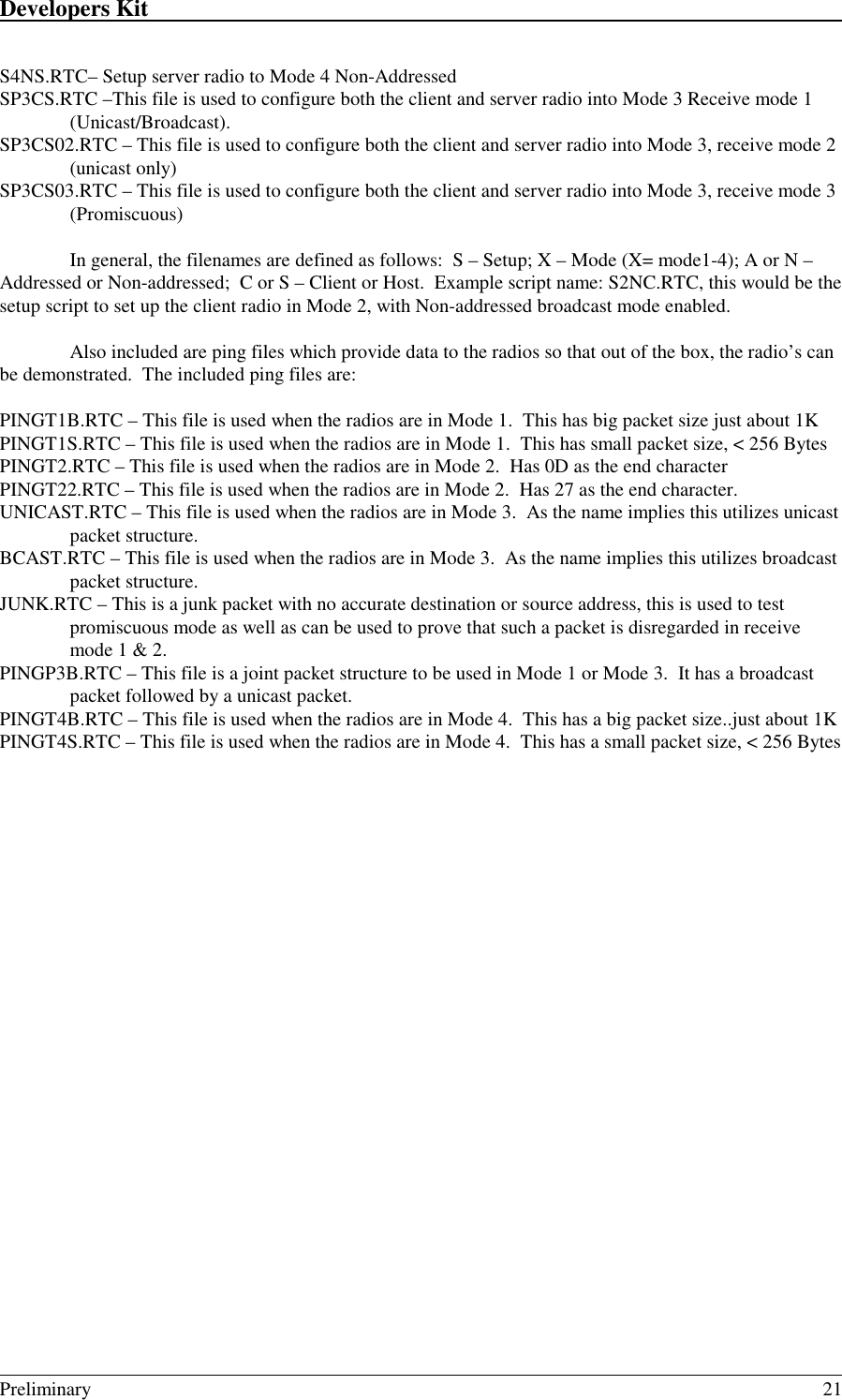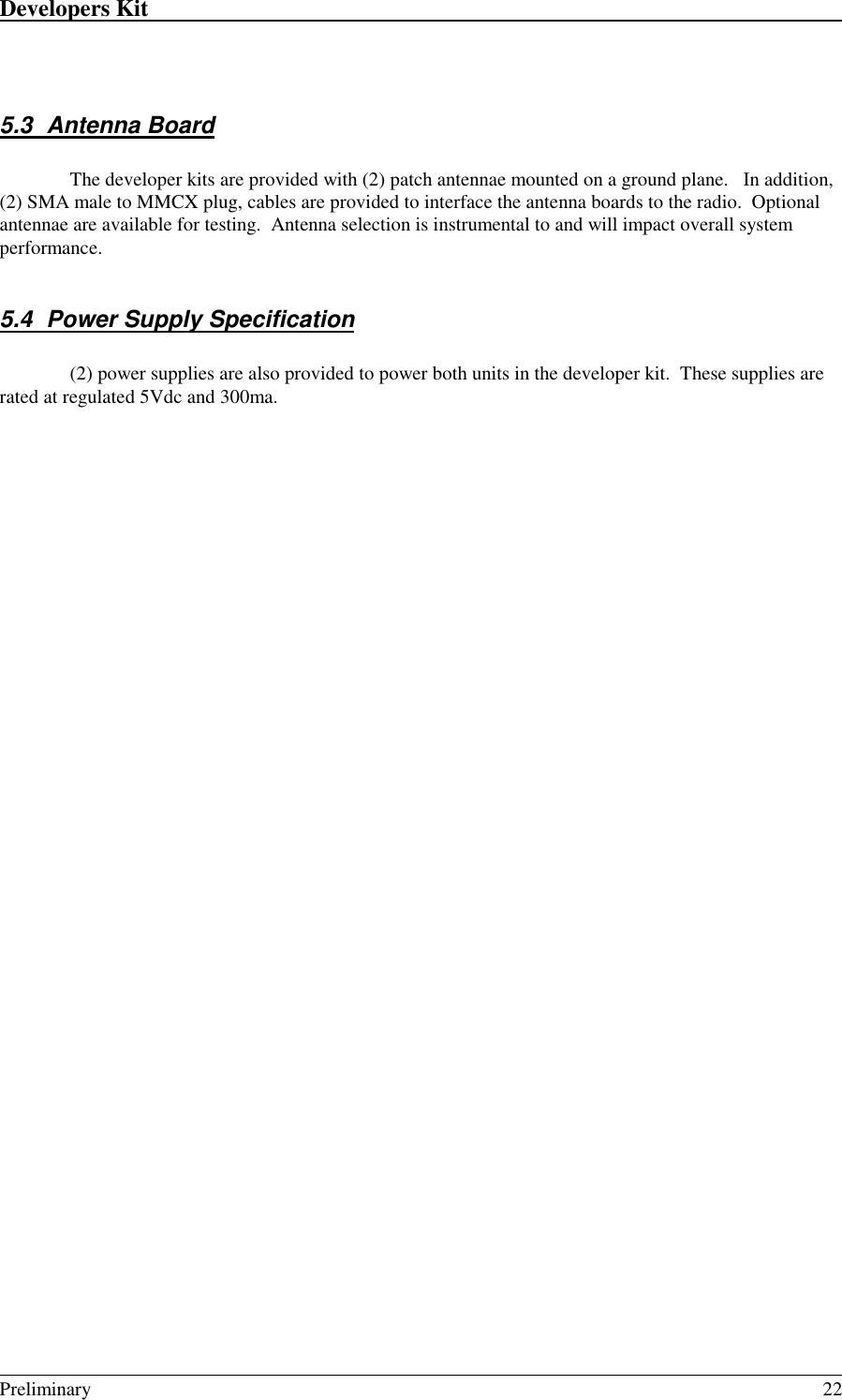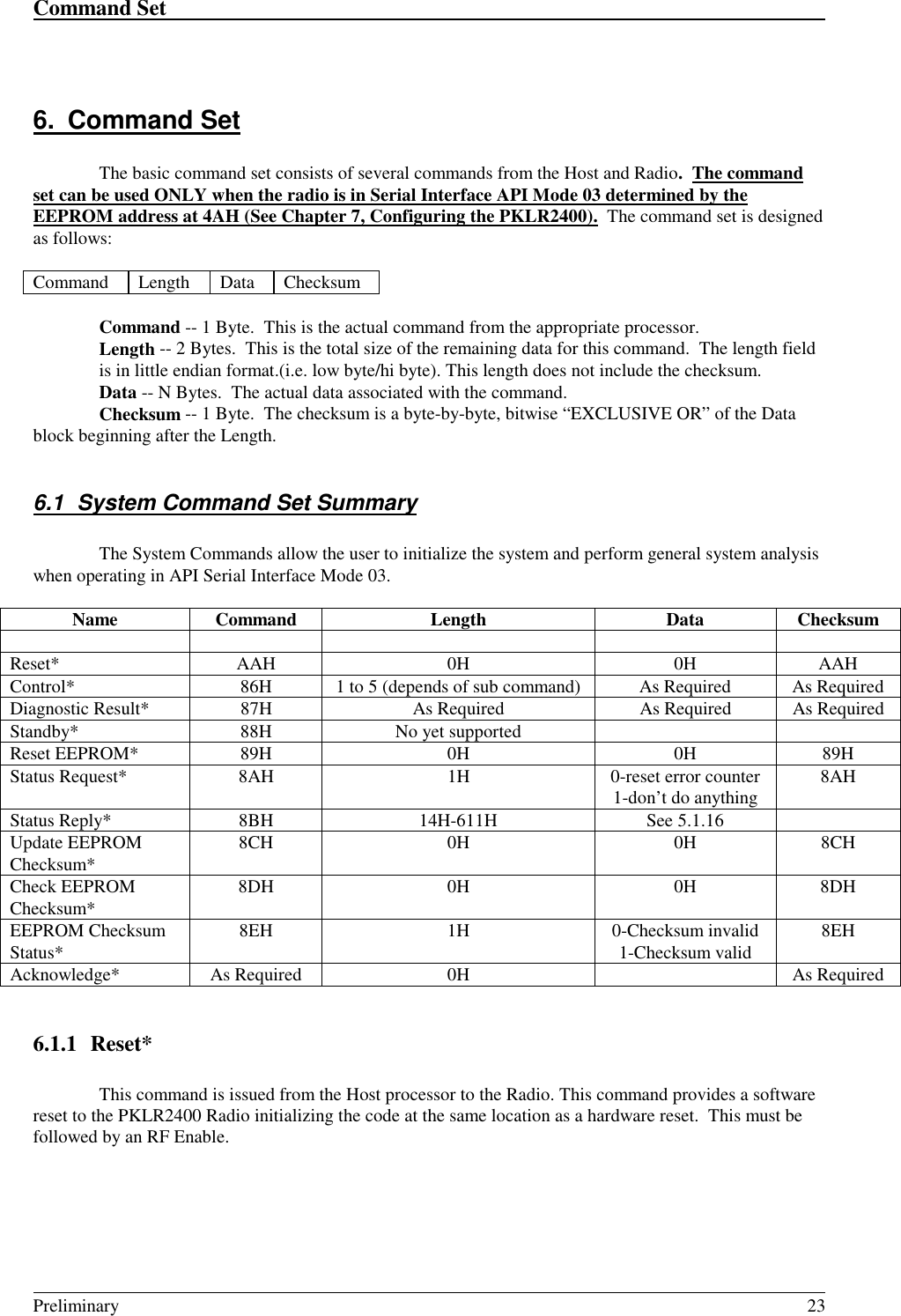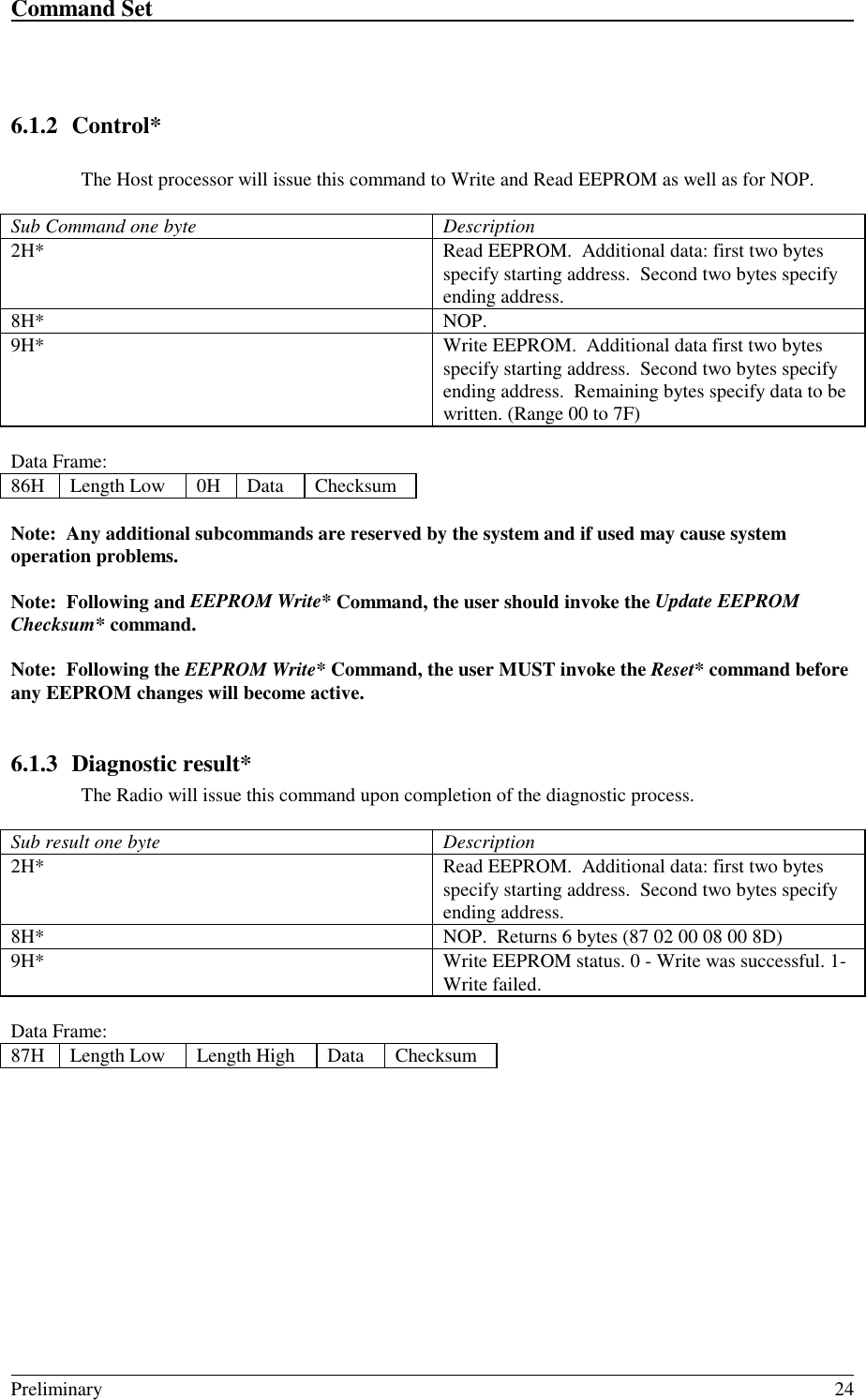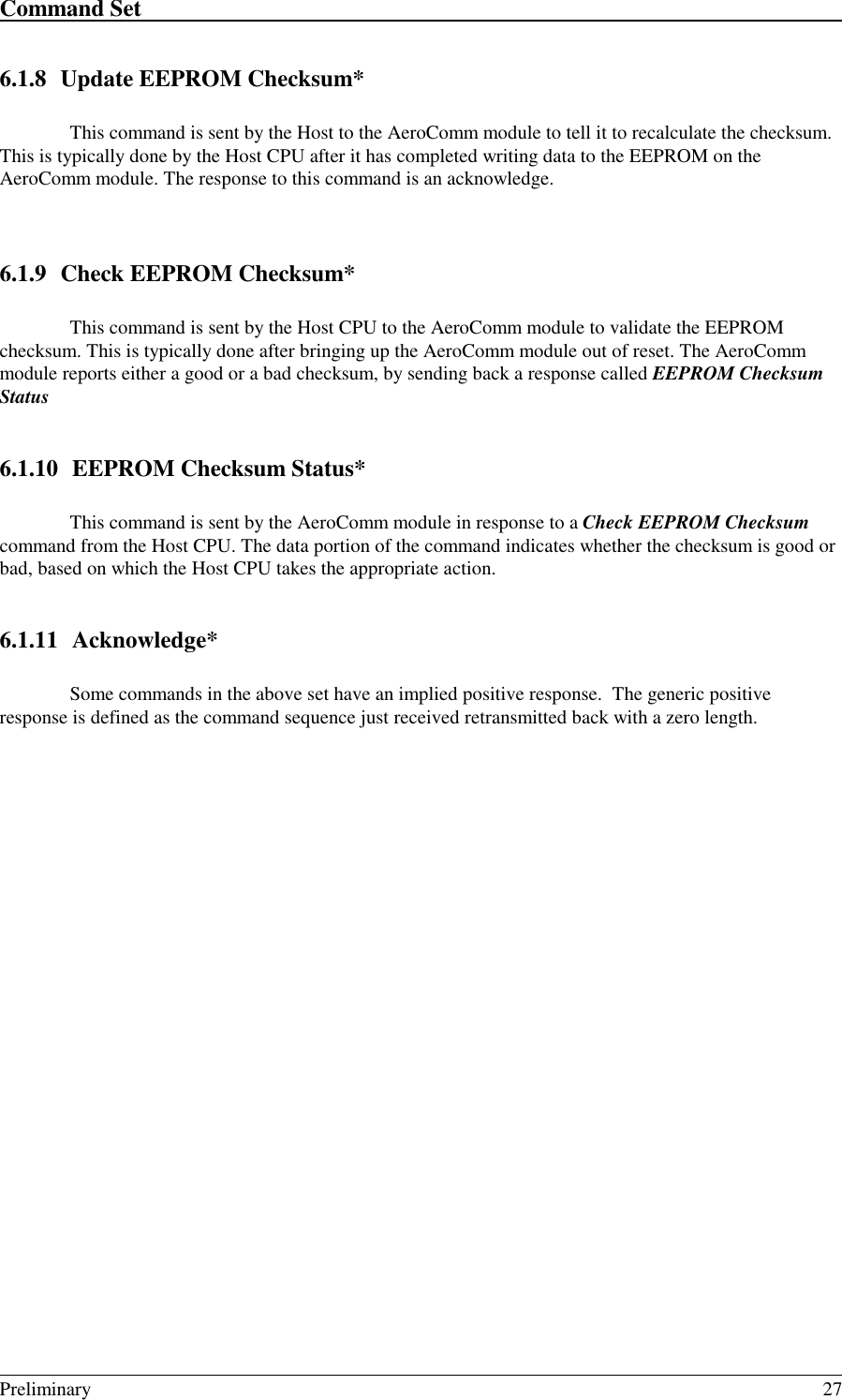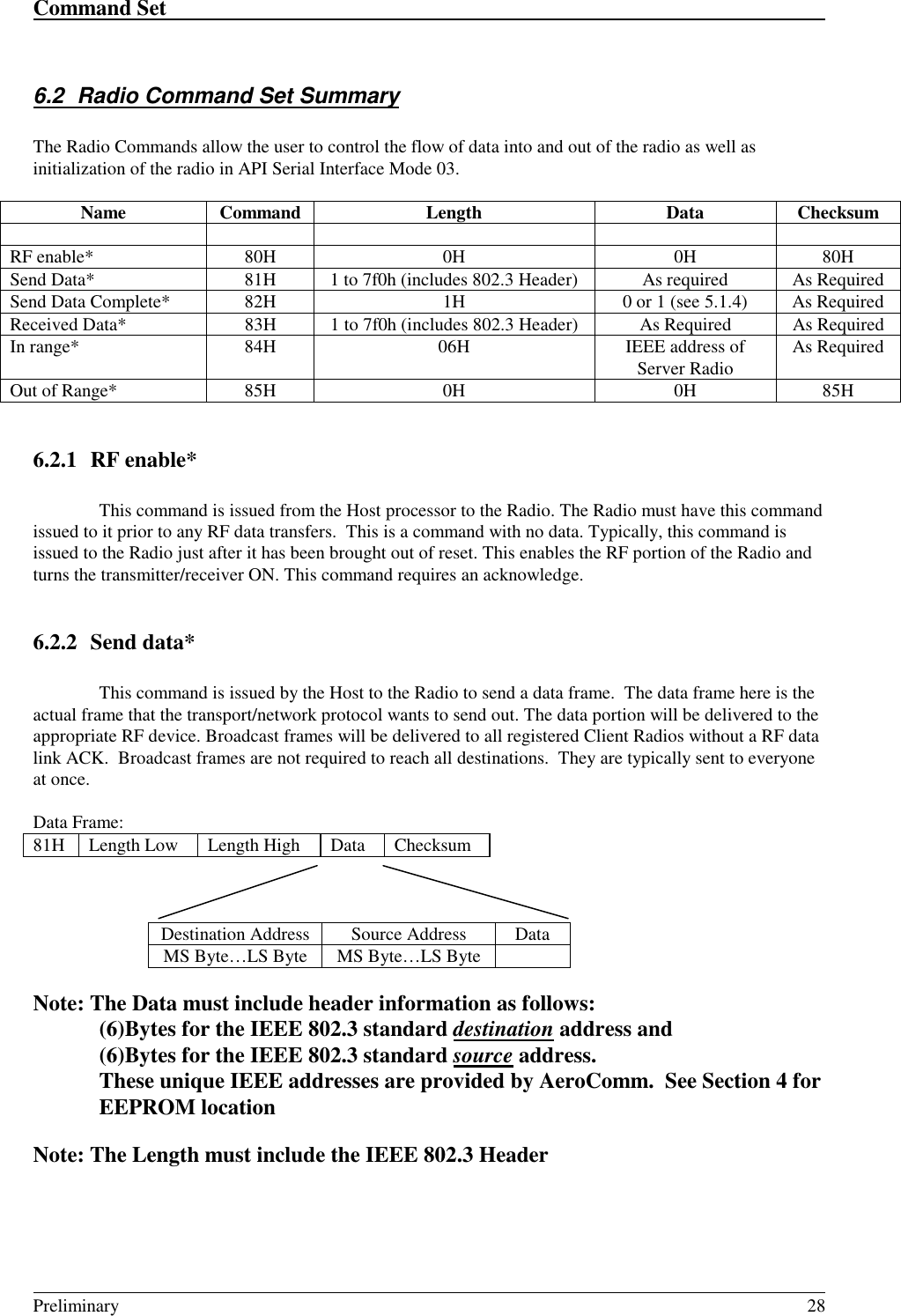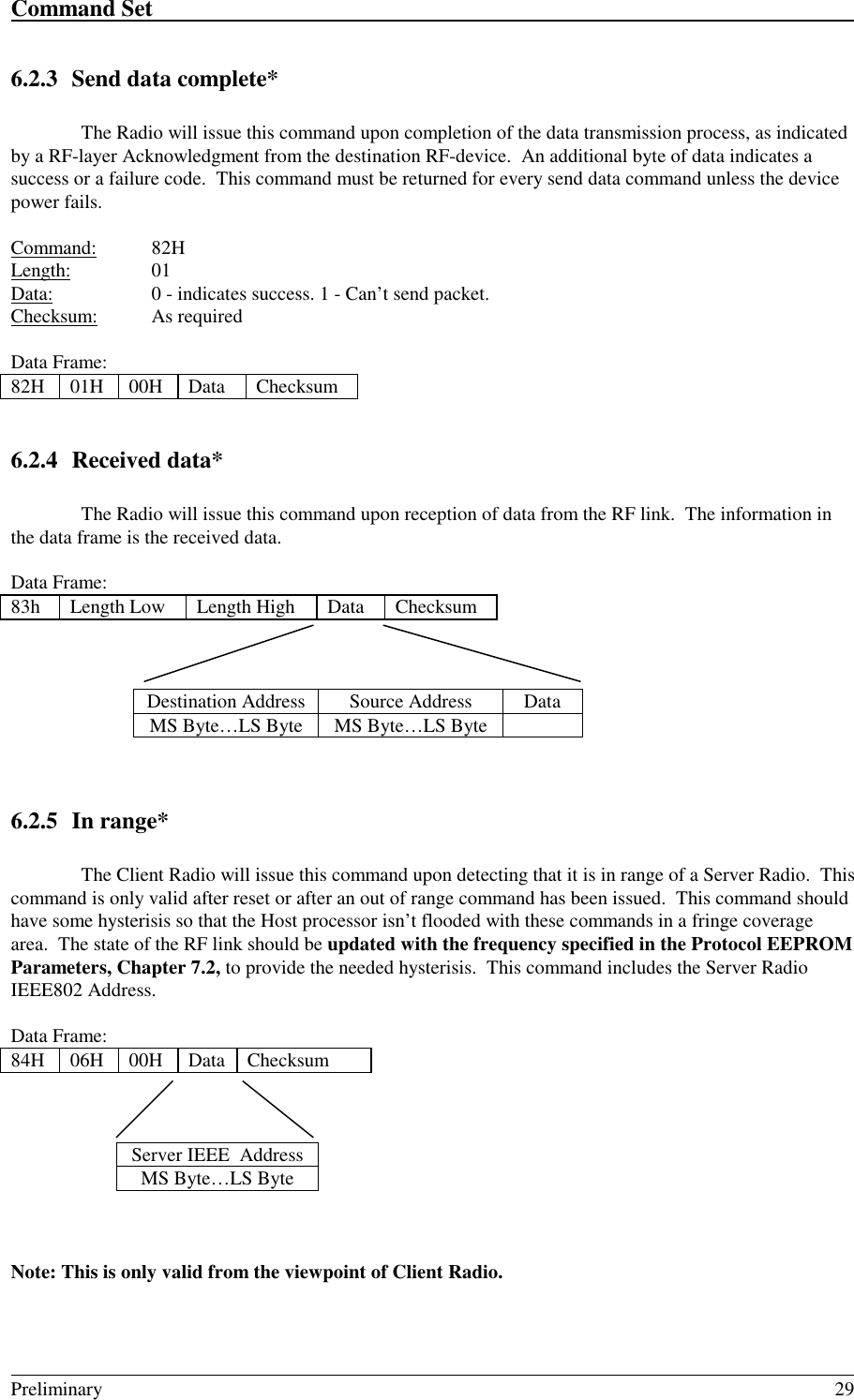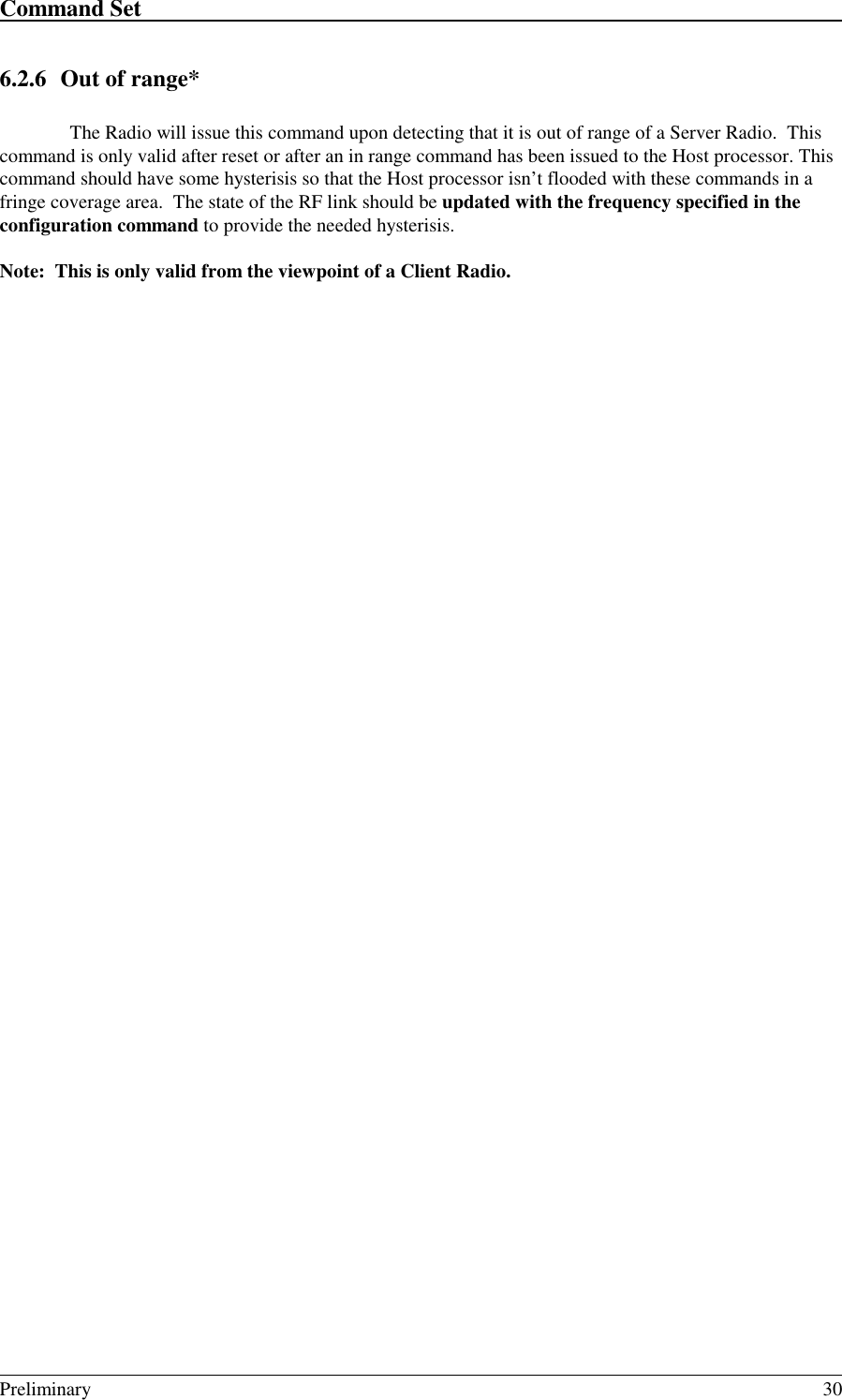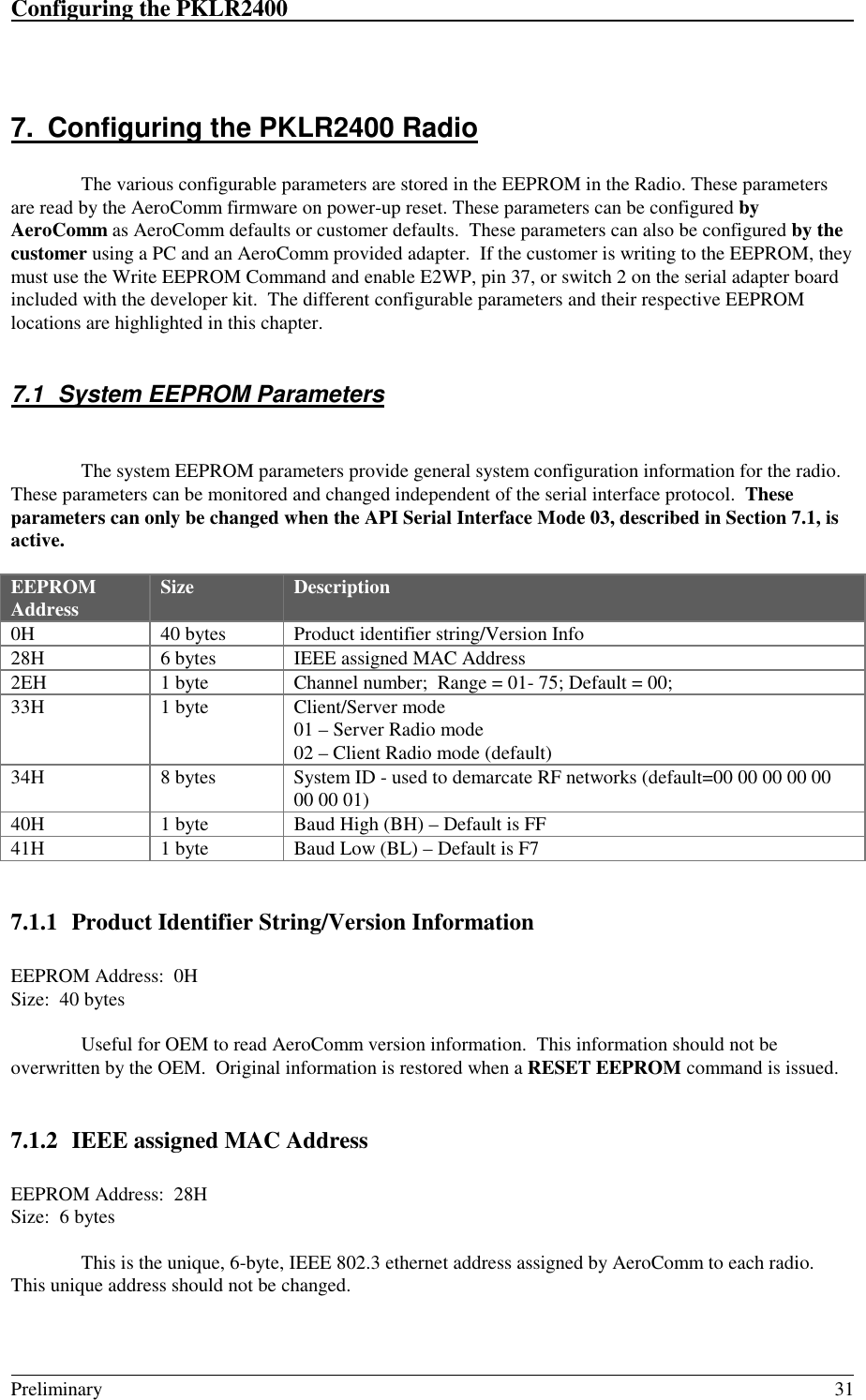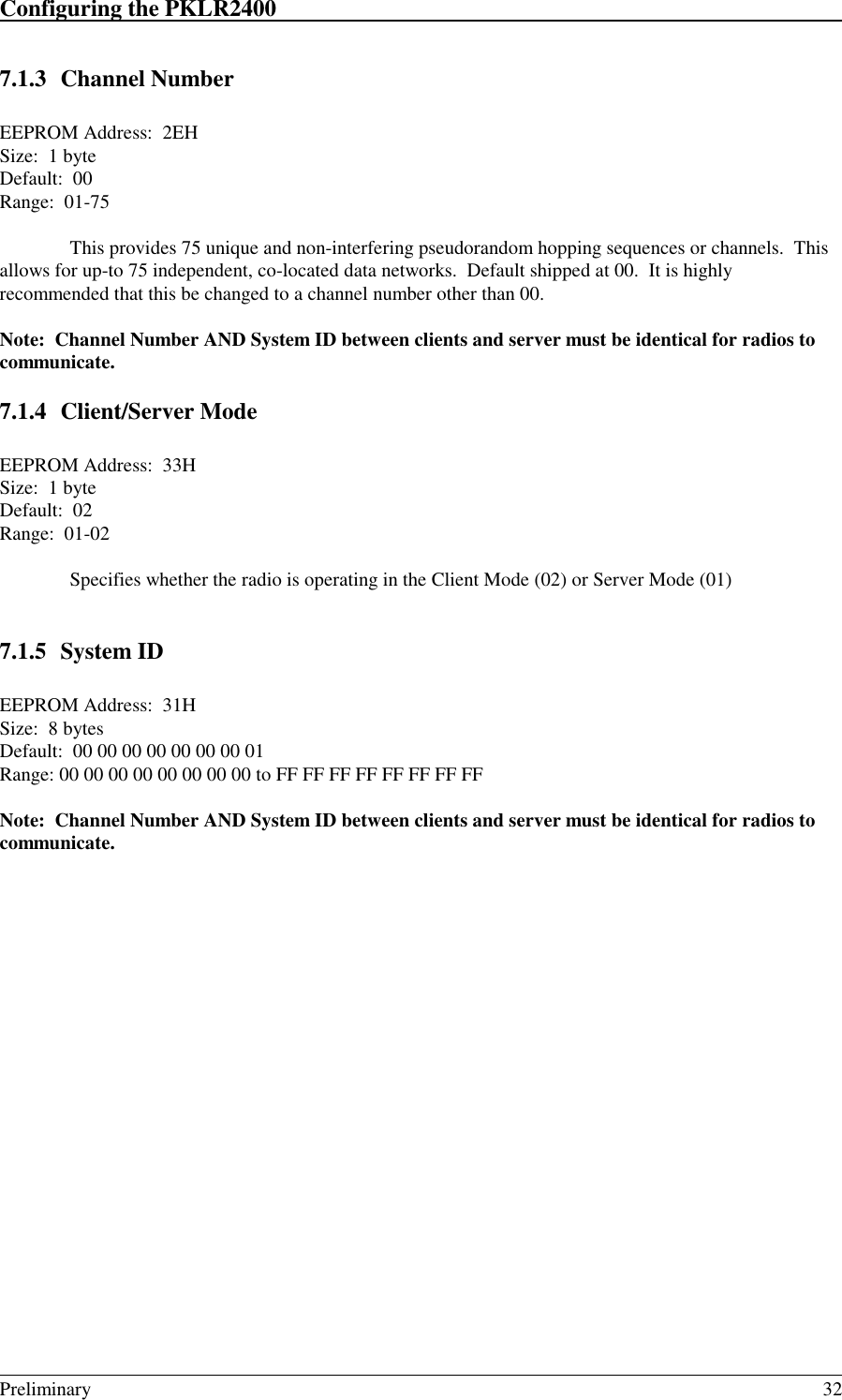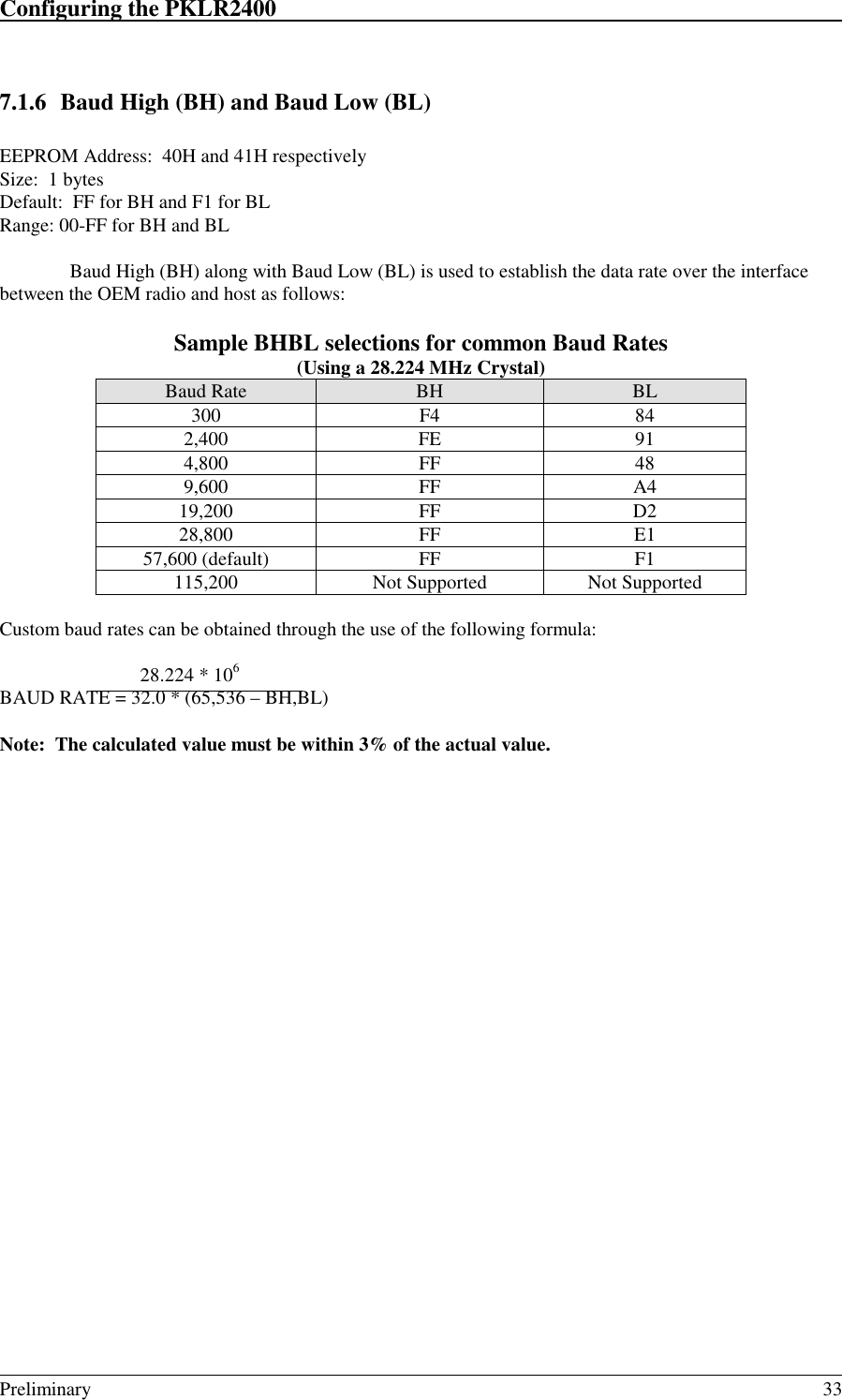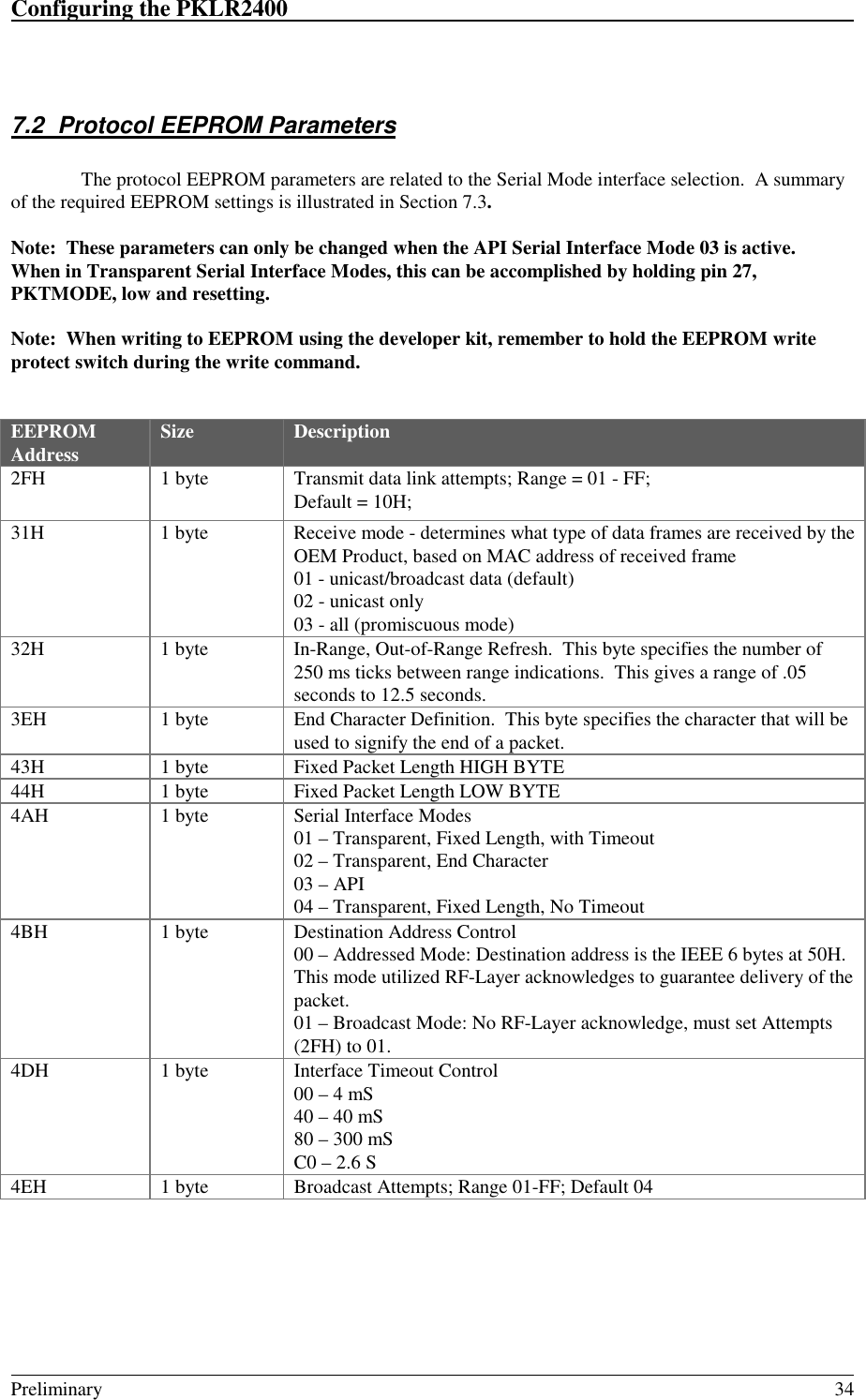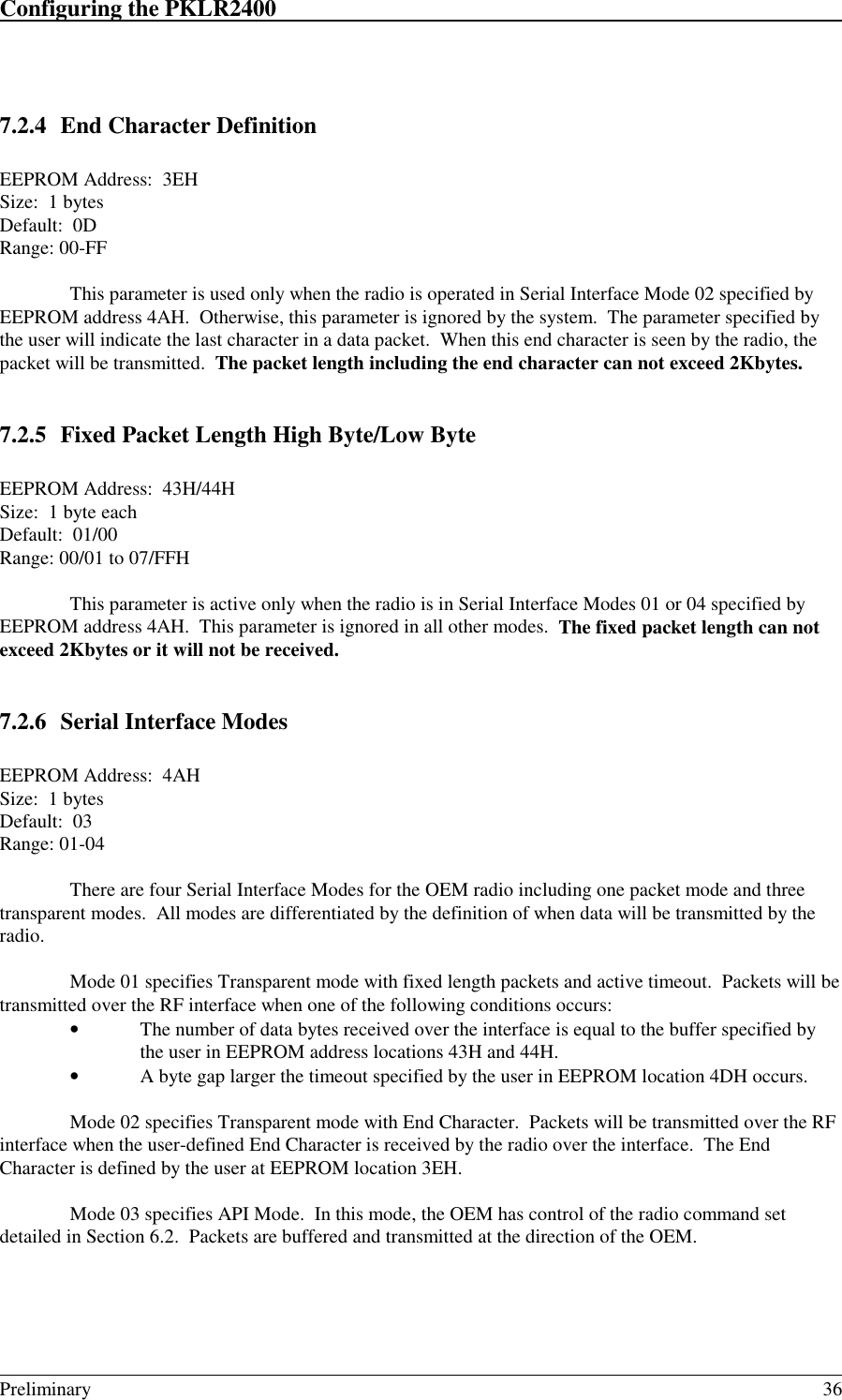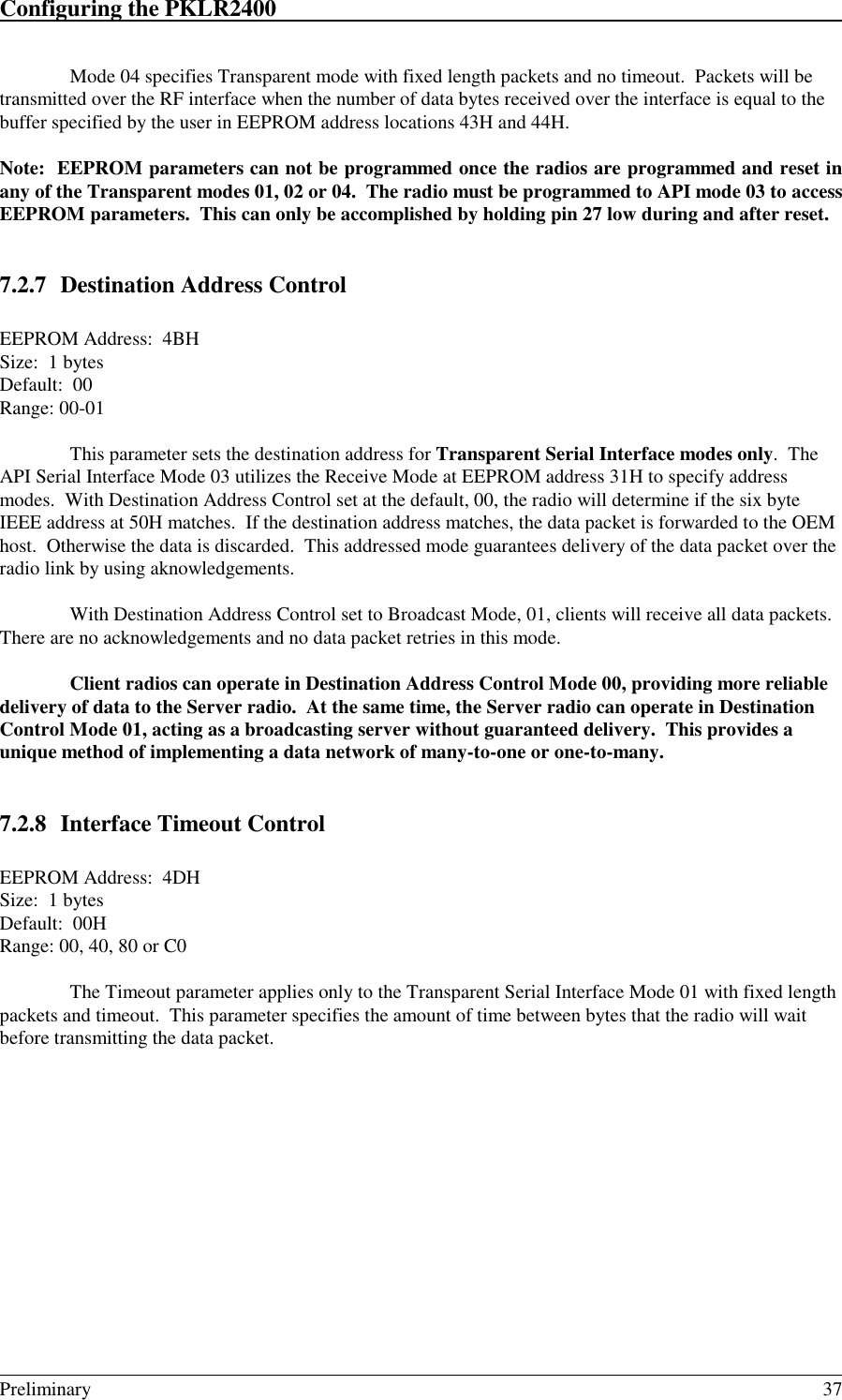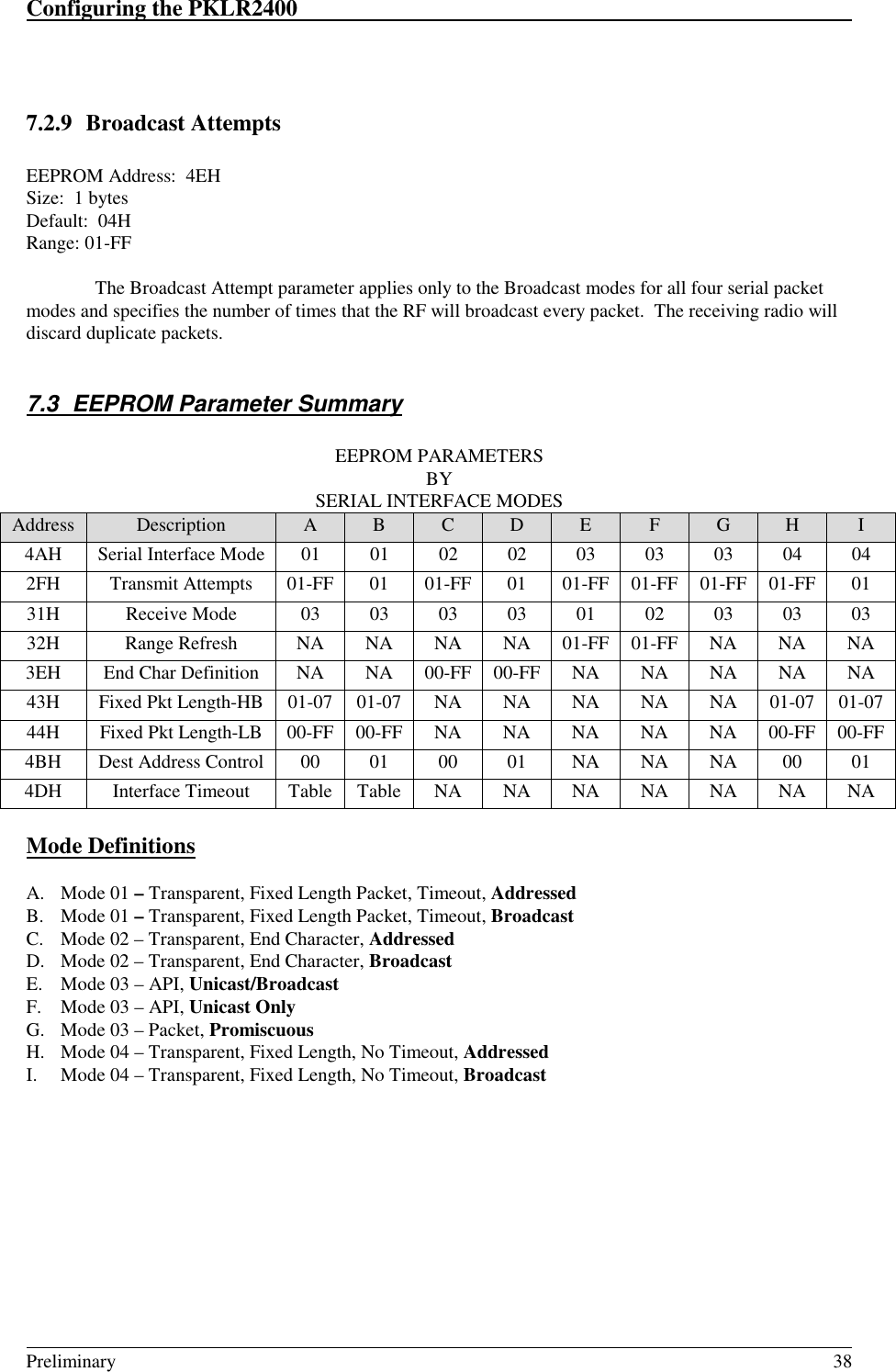Laird Connectivity PKLR2400 User Manual Aerocomm OEM Radio
AeroComm Corporation Aerocomm OEM Radio
Contents
- 1. Exhibit 8 subsection 6 Diagram of proprietary MMCX antenna connector
- 2. Exhibit 14 AeroComm PKLR2400 Radio Users Manual
- 3. Revised users manual
- 4. revised FCC Warning per correspondence 11176
- 5. FCC RF Exposure Warning ref to correspondence 11623
Exhibit 14 AeroComm PKLR2400 Radio Users Manual
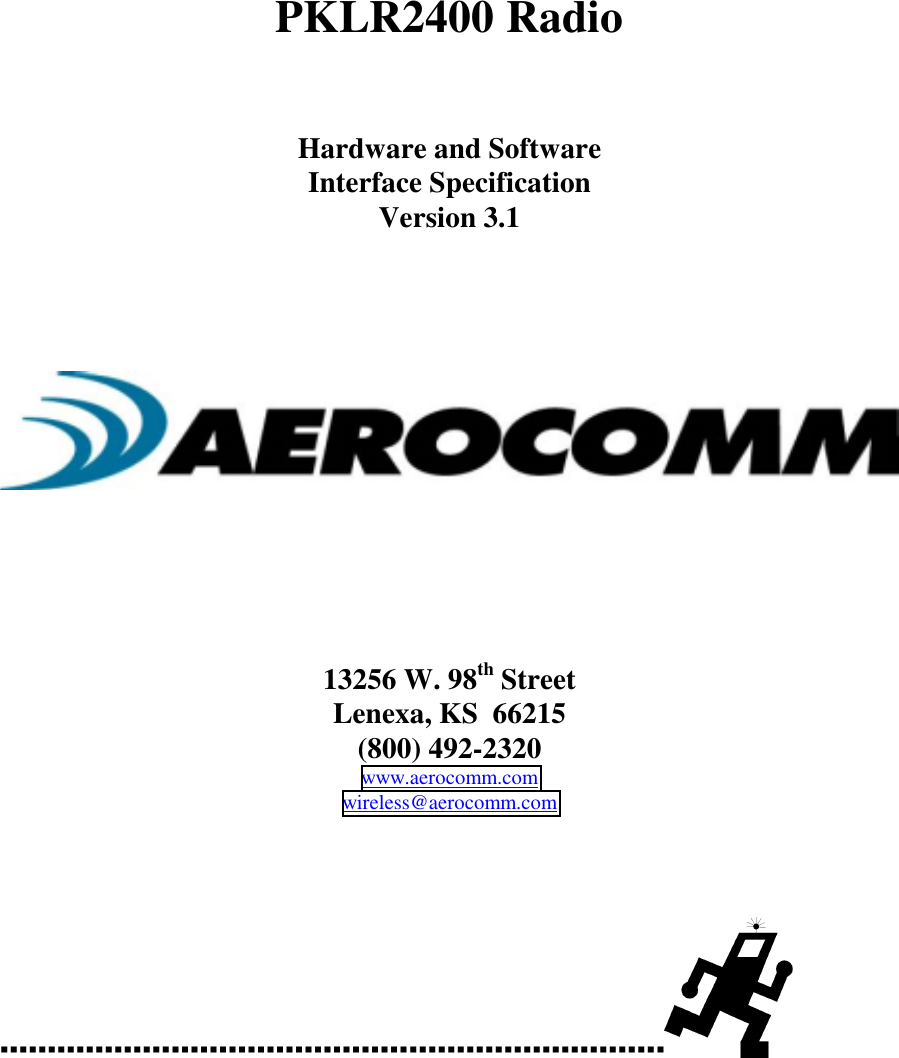
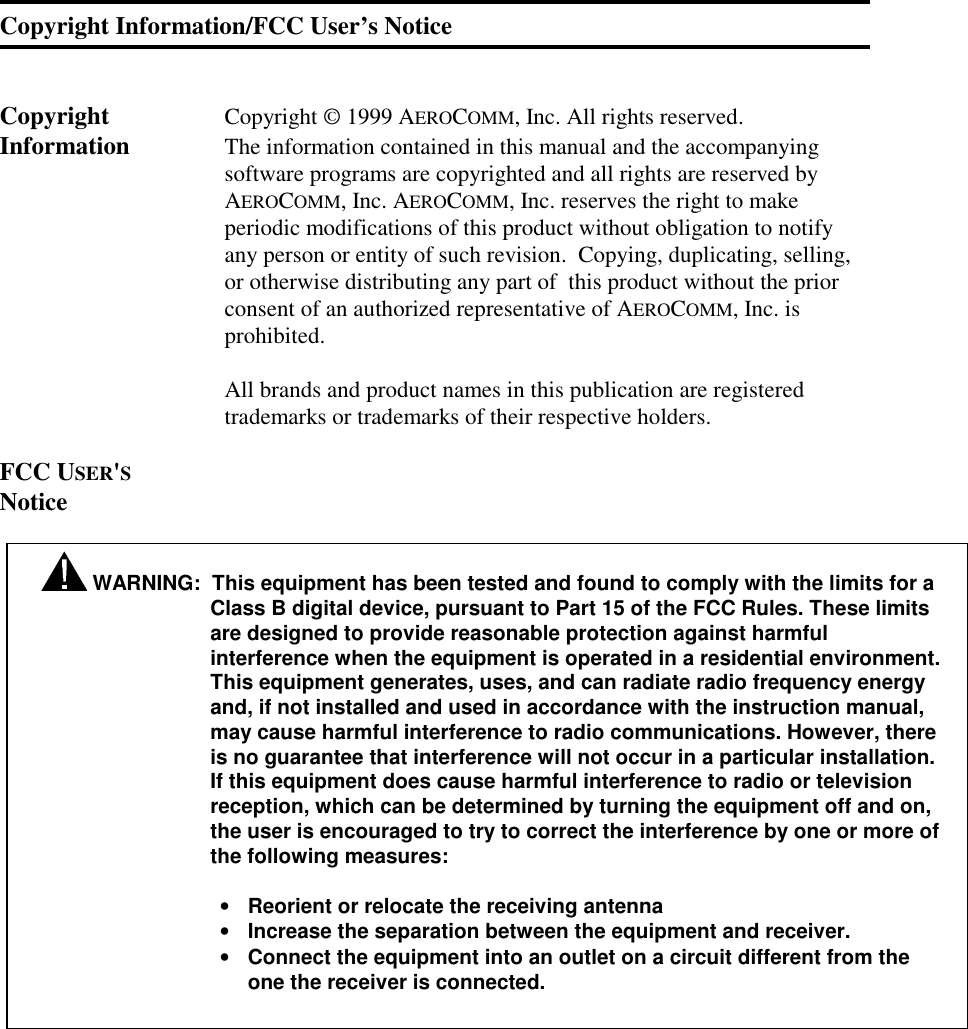
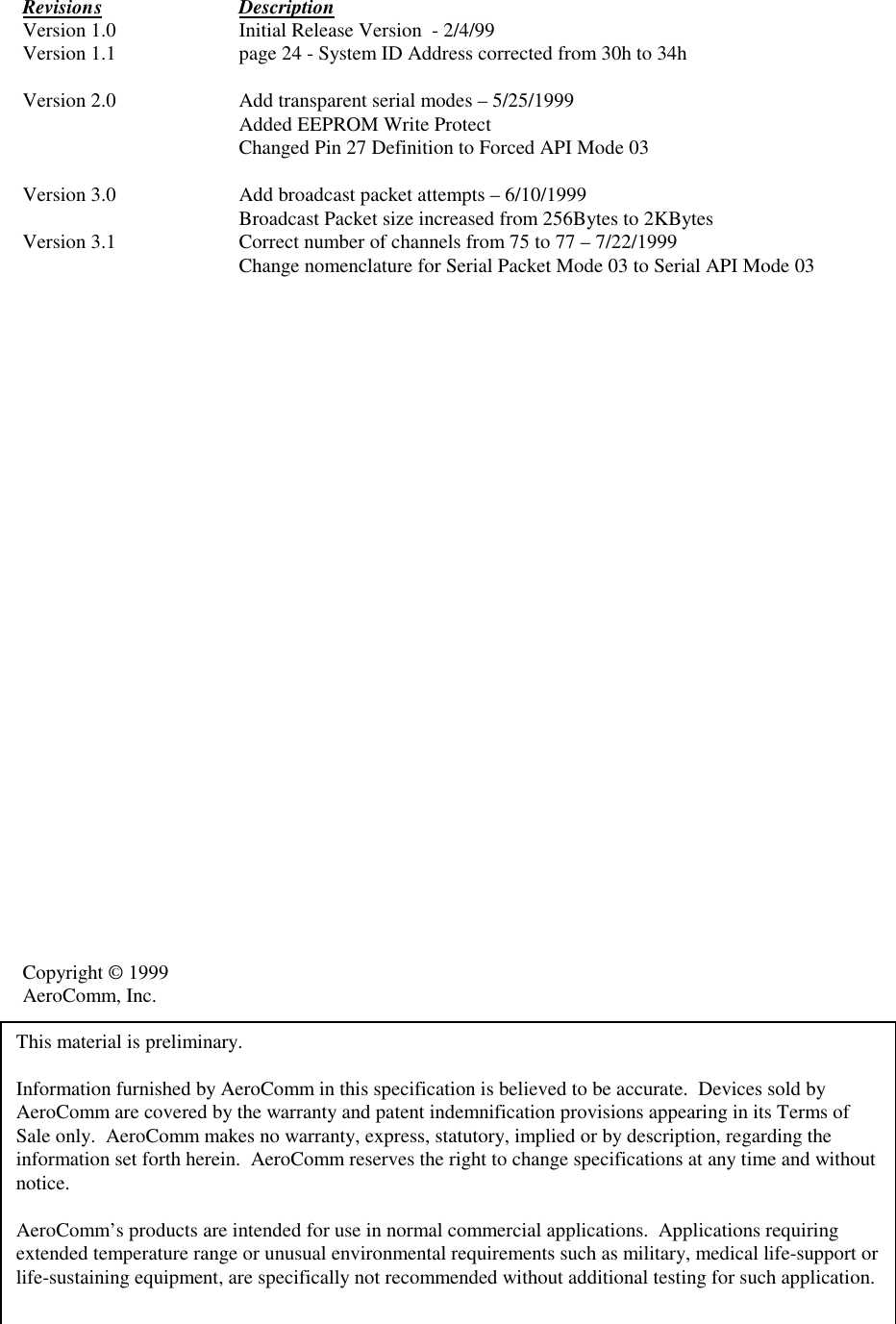
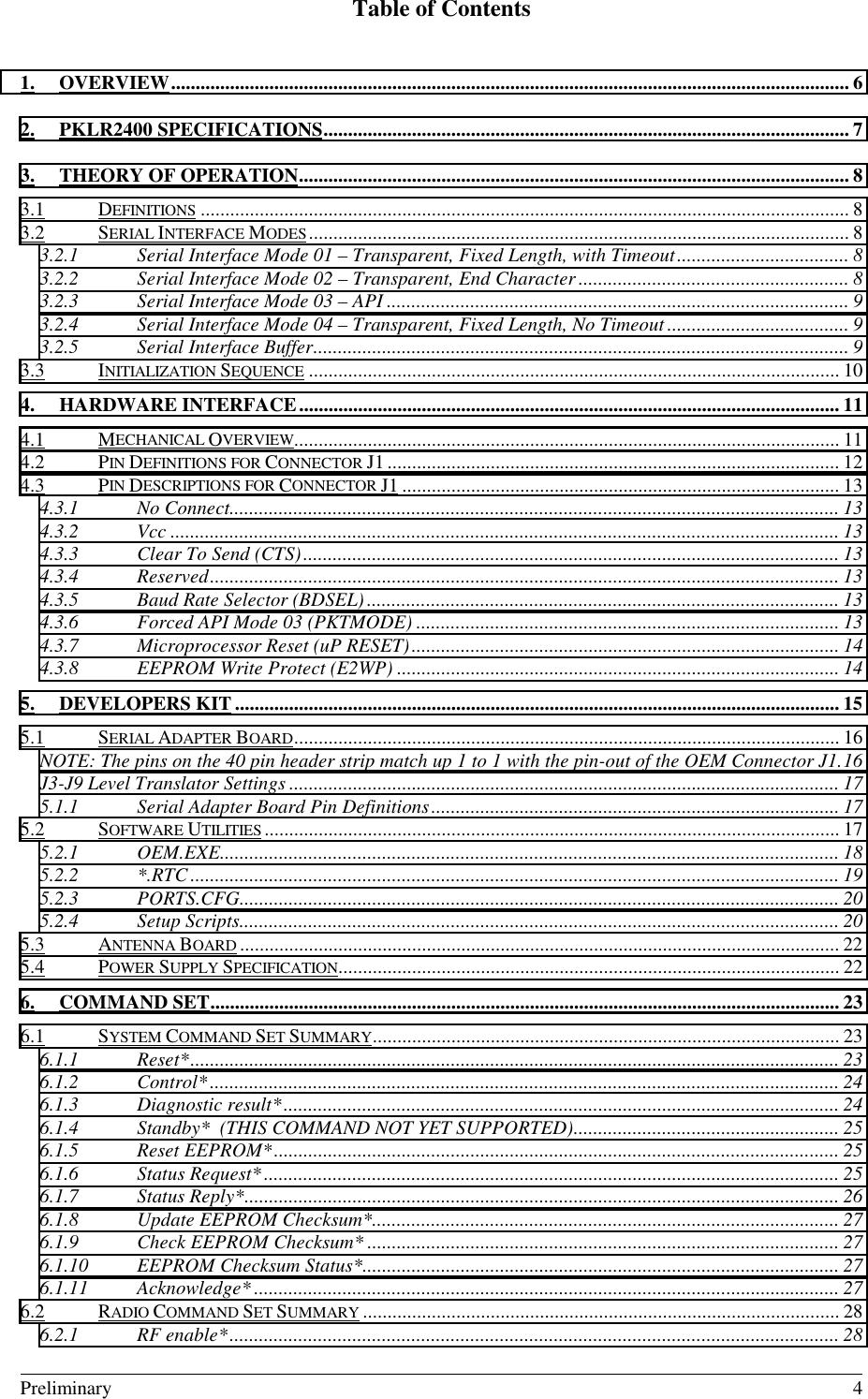
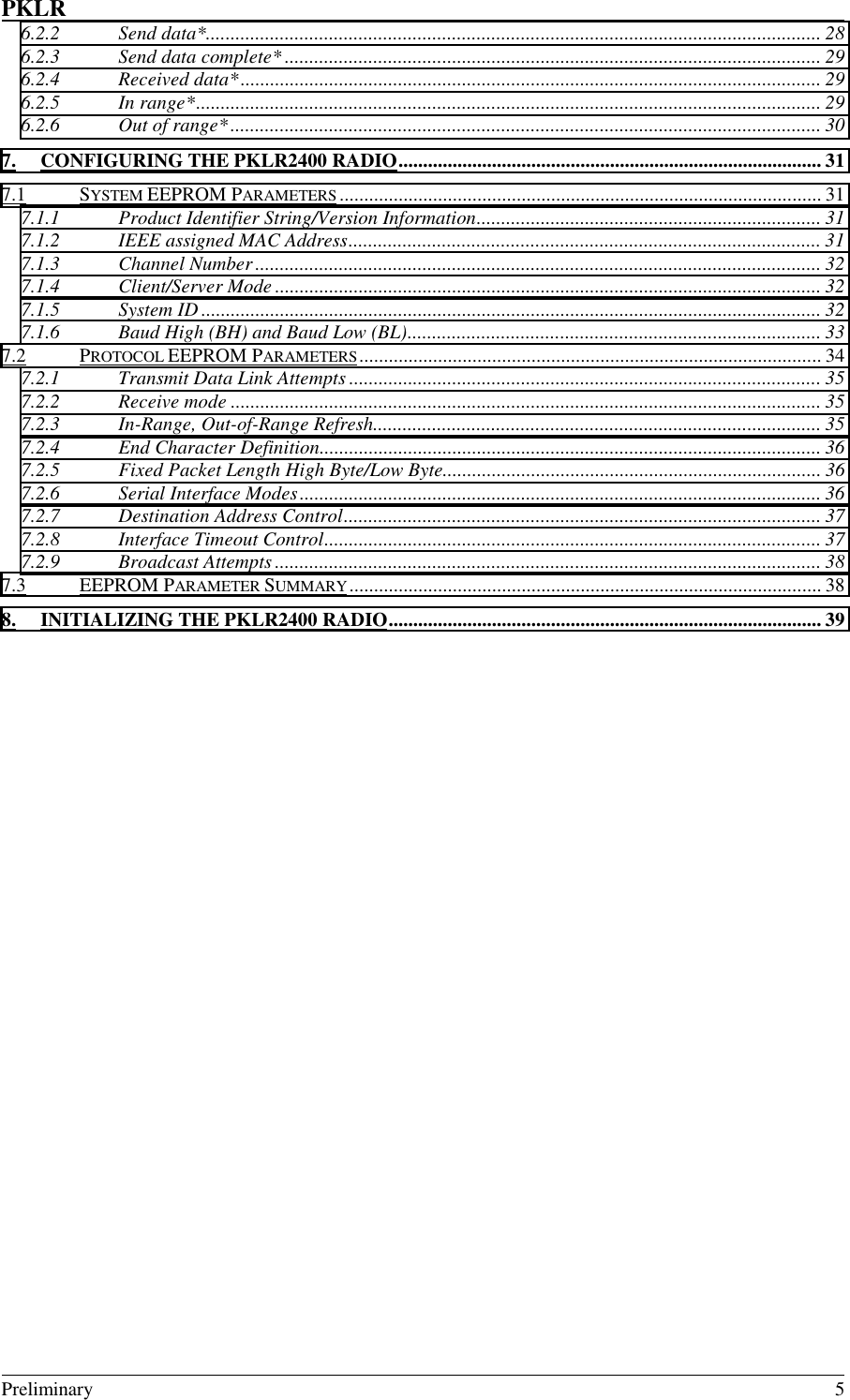
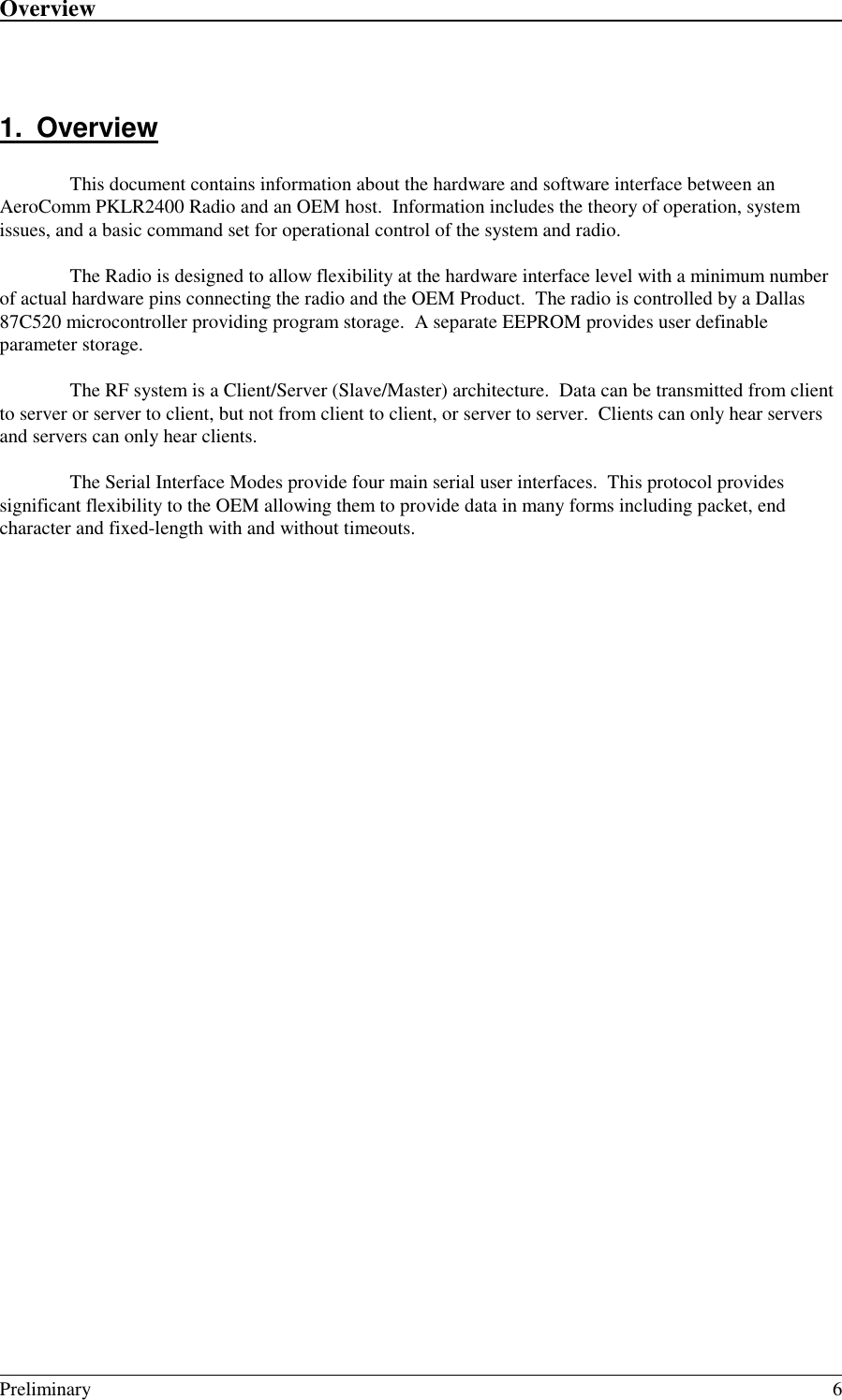
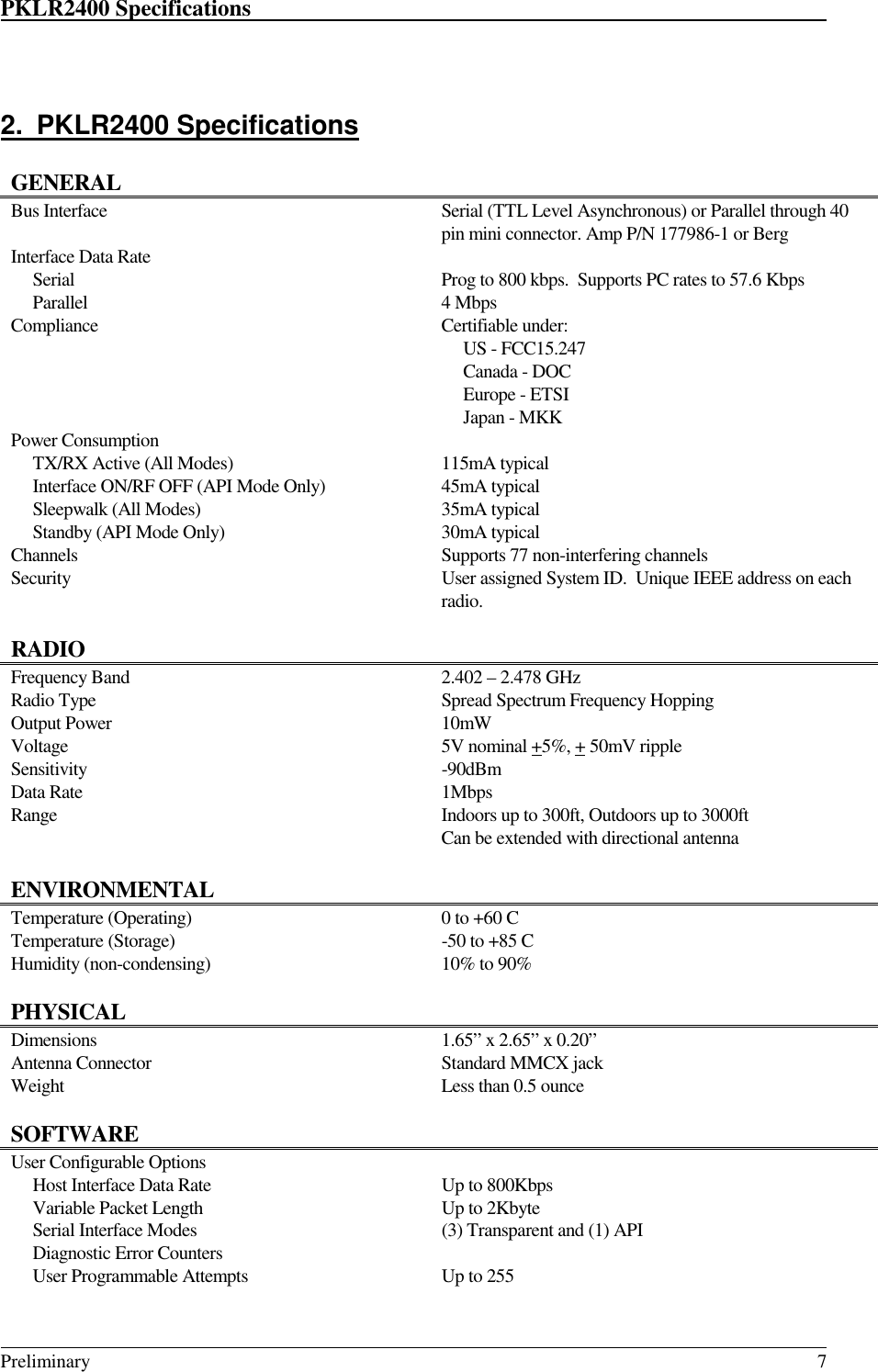
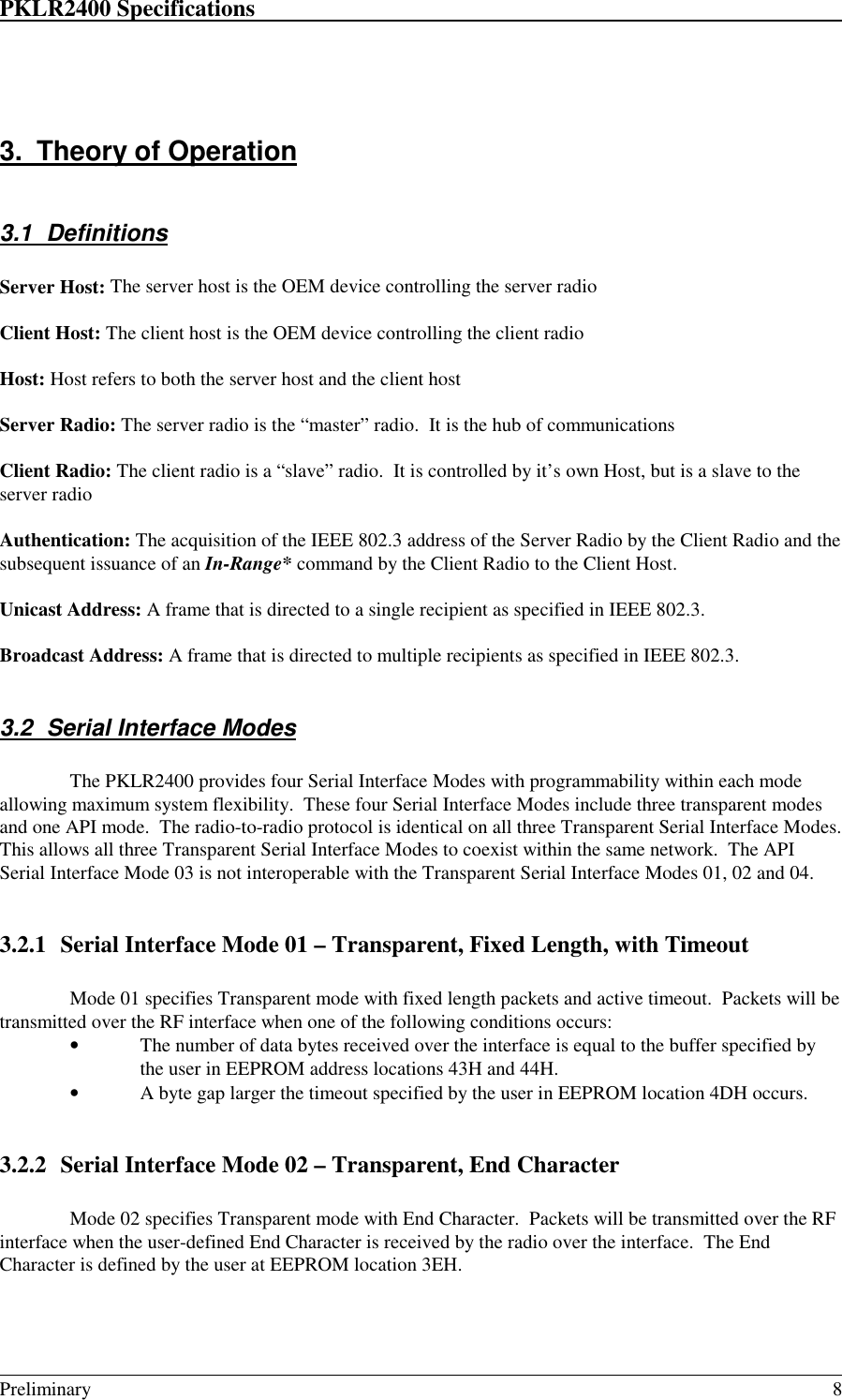
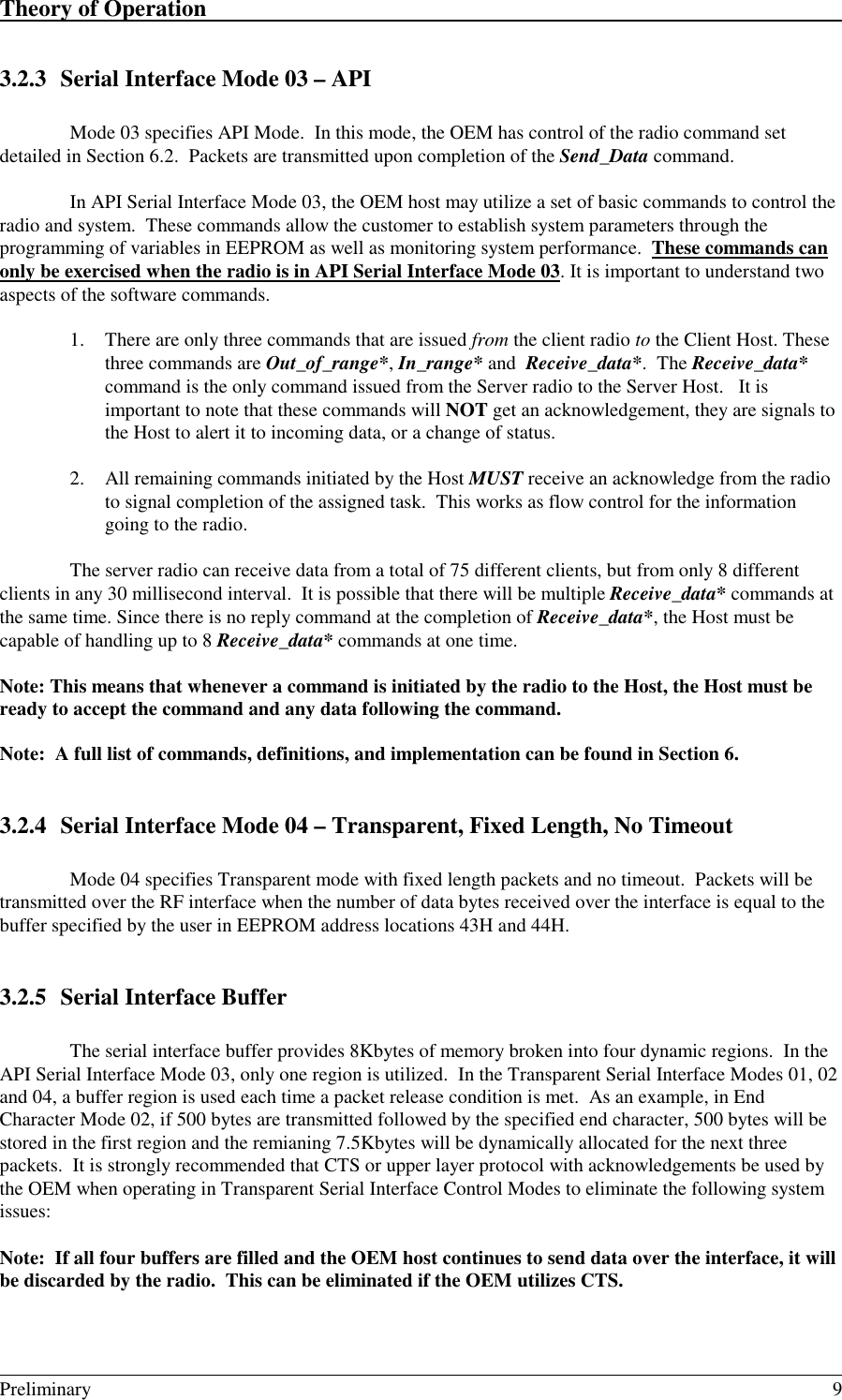
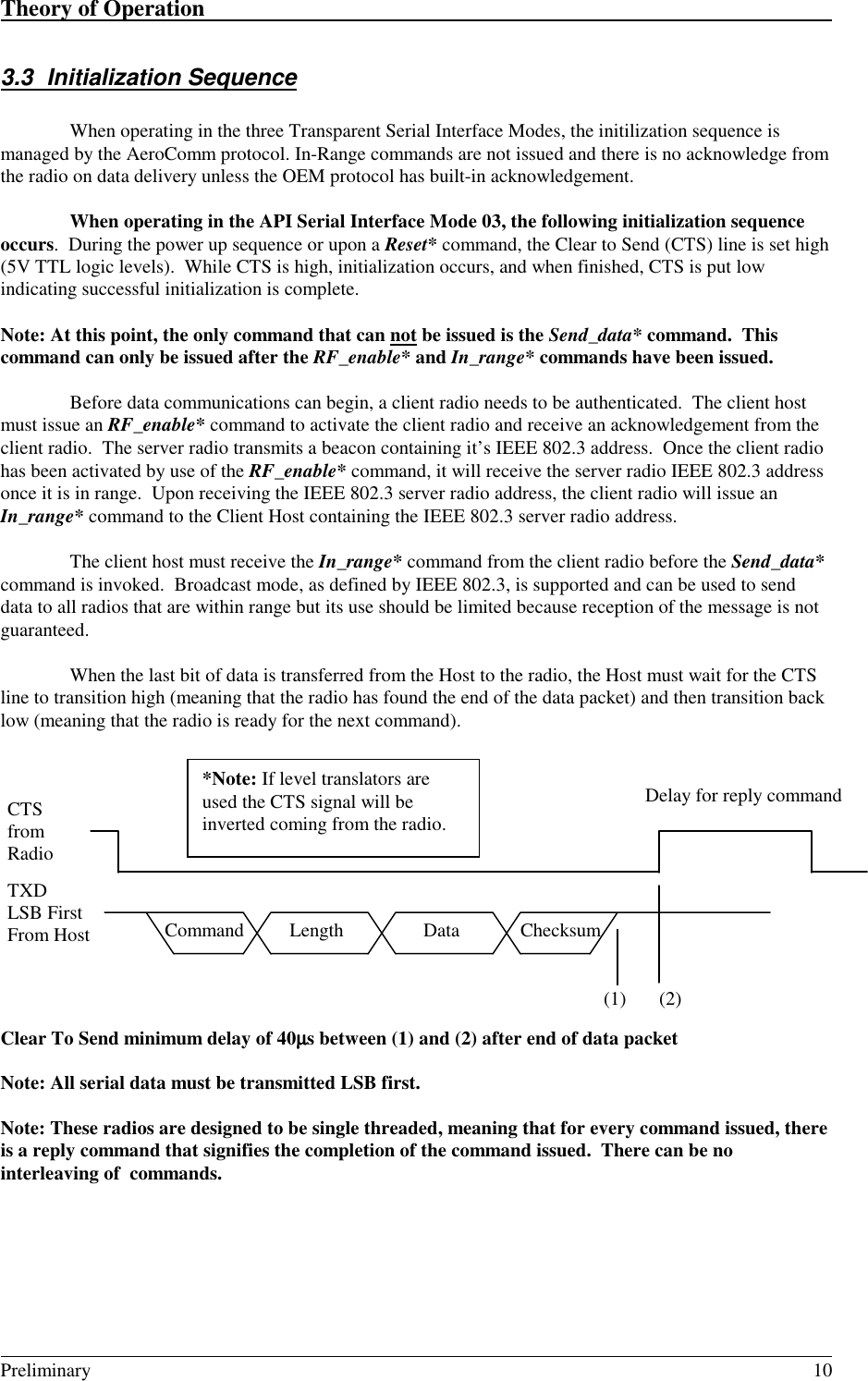
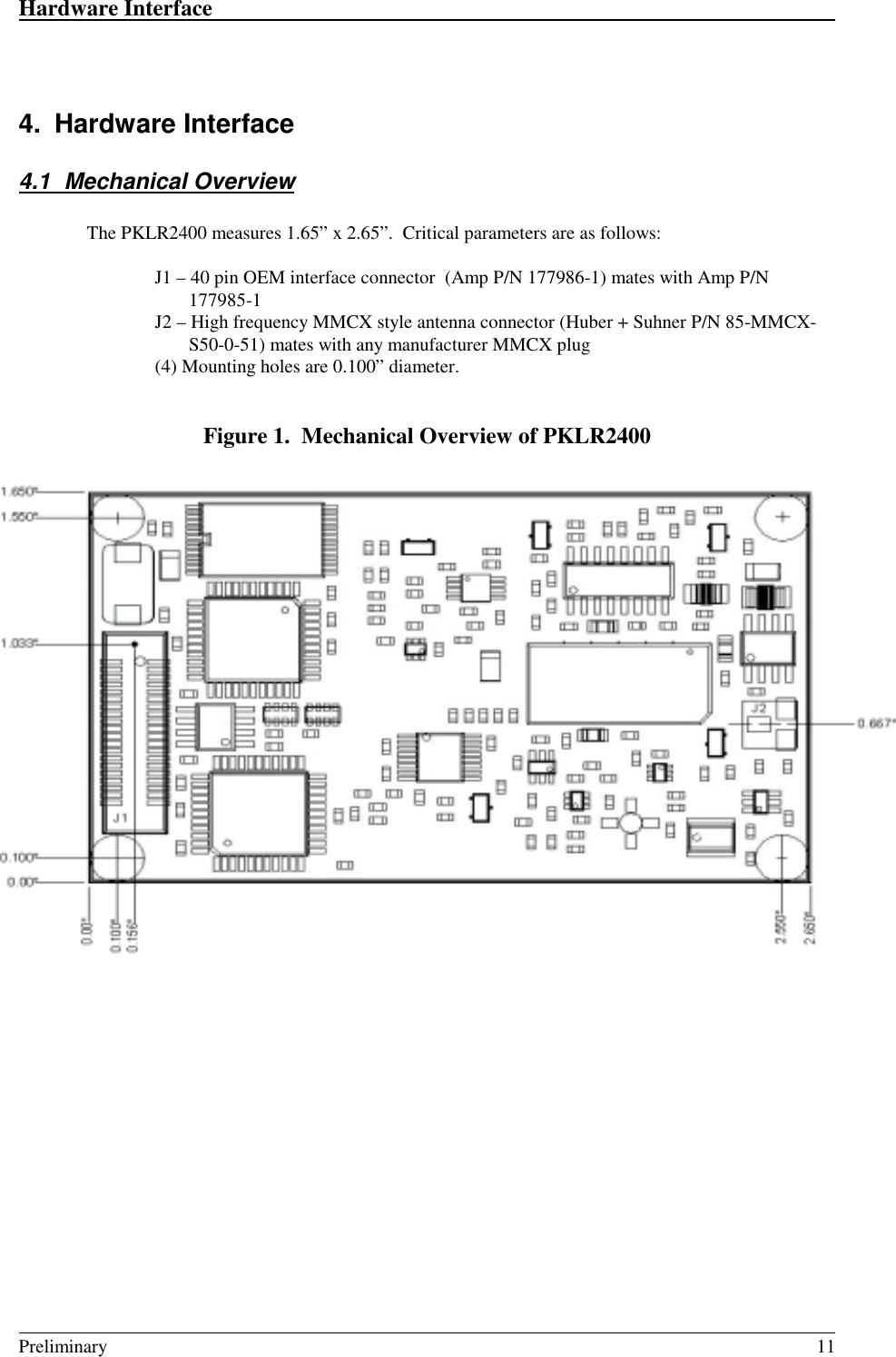
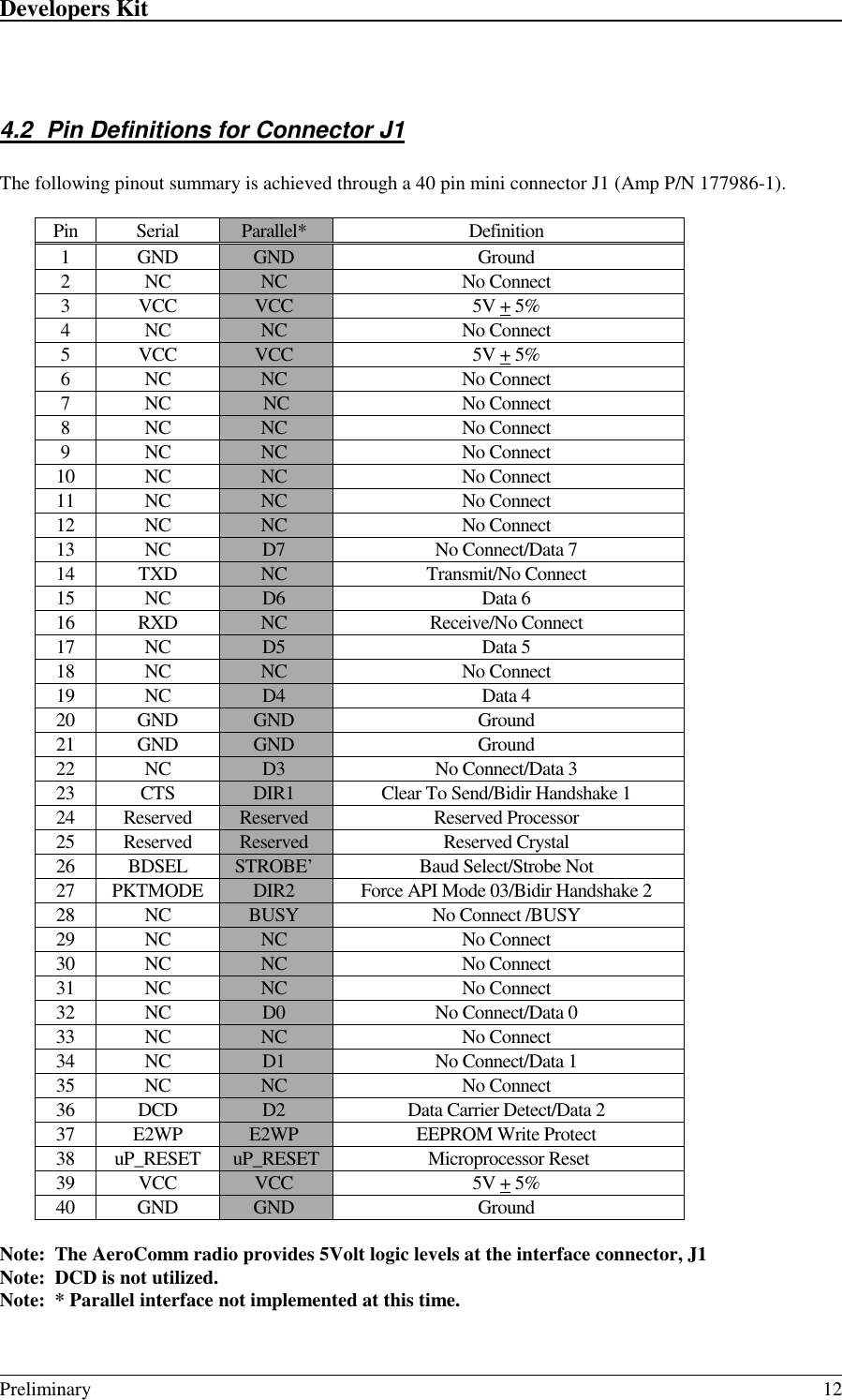
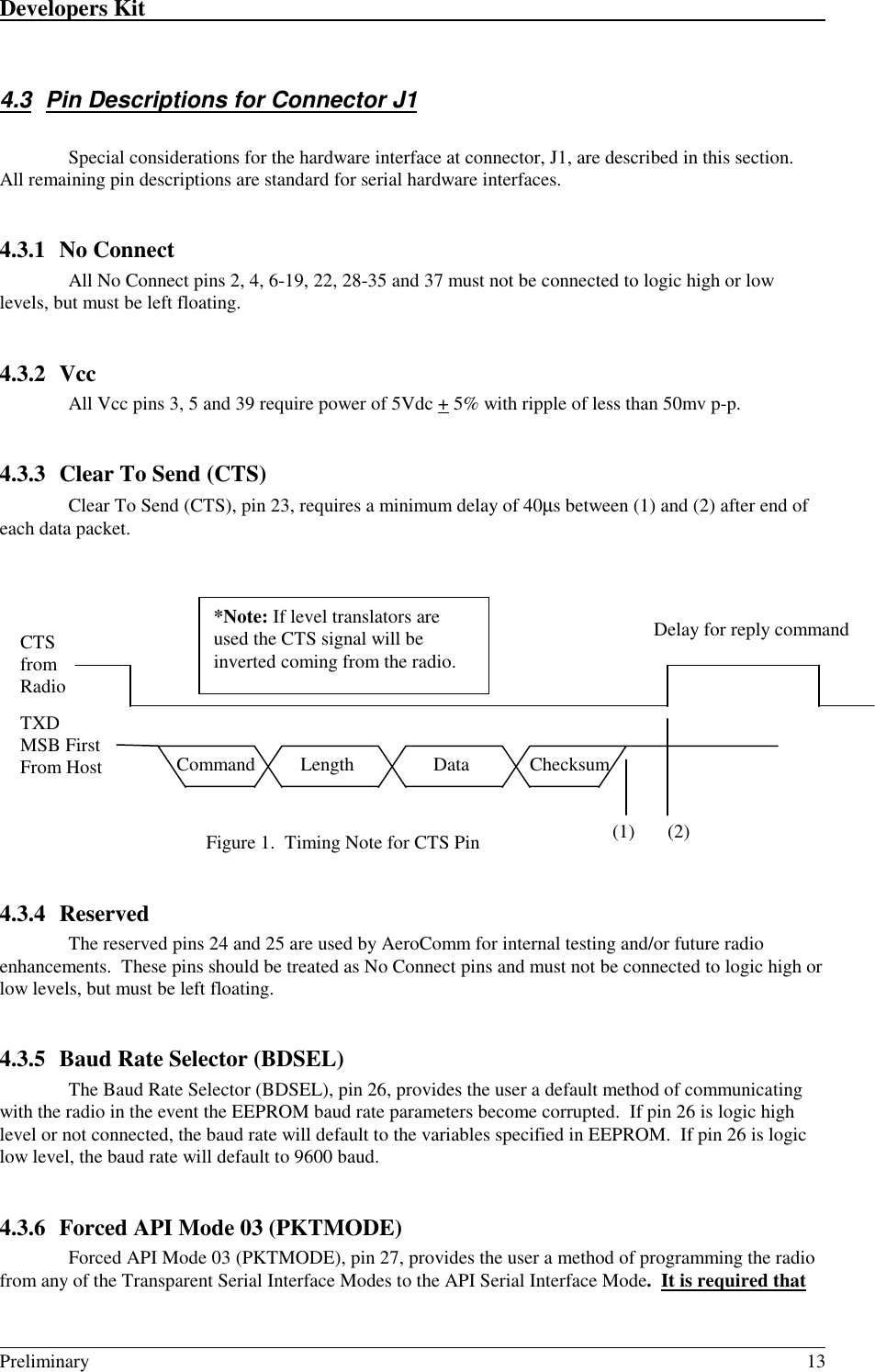
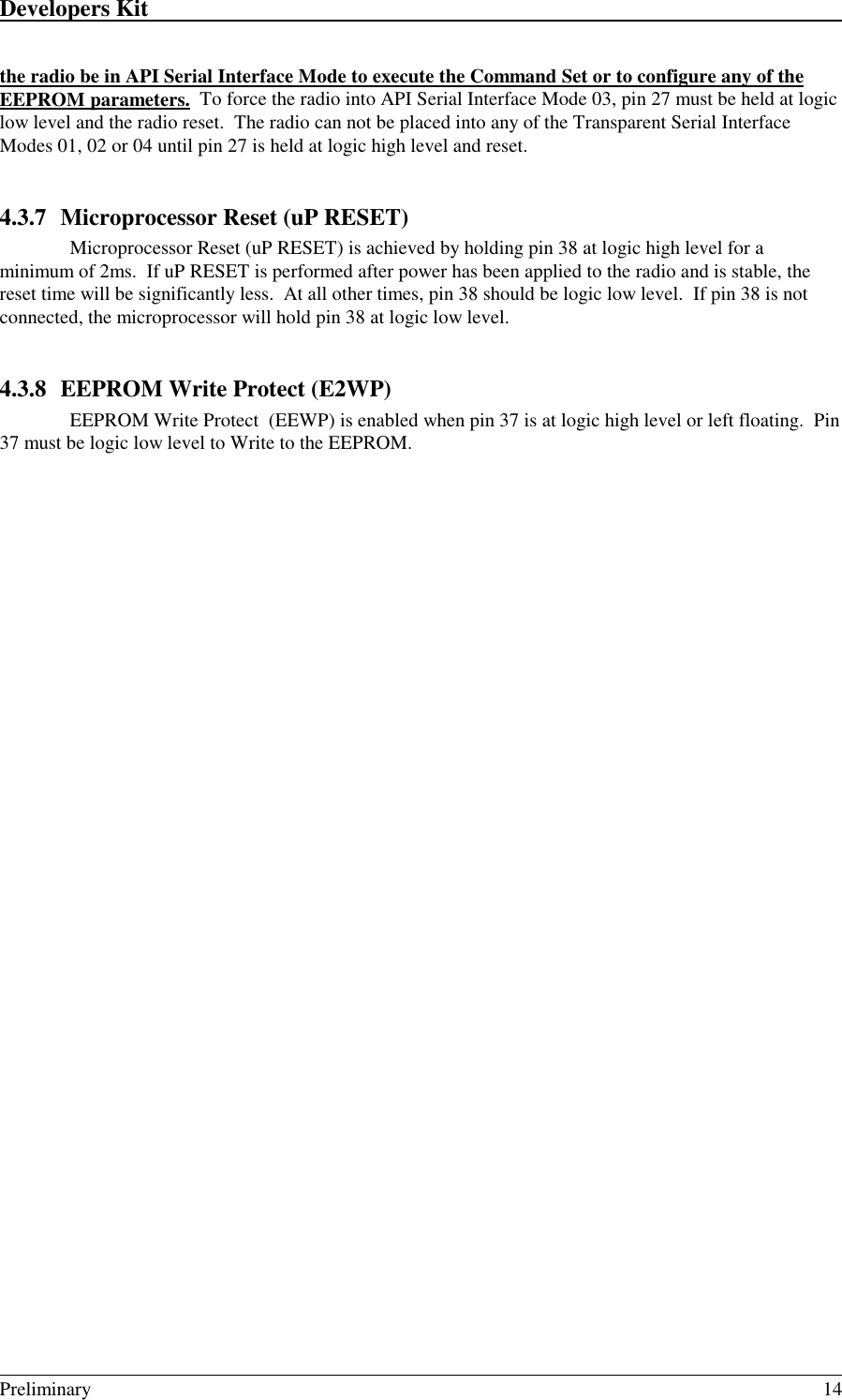
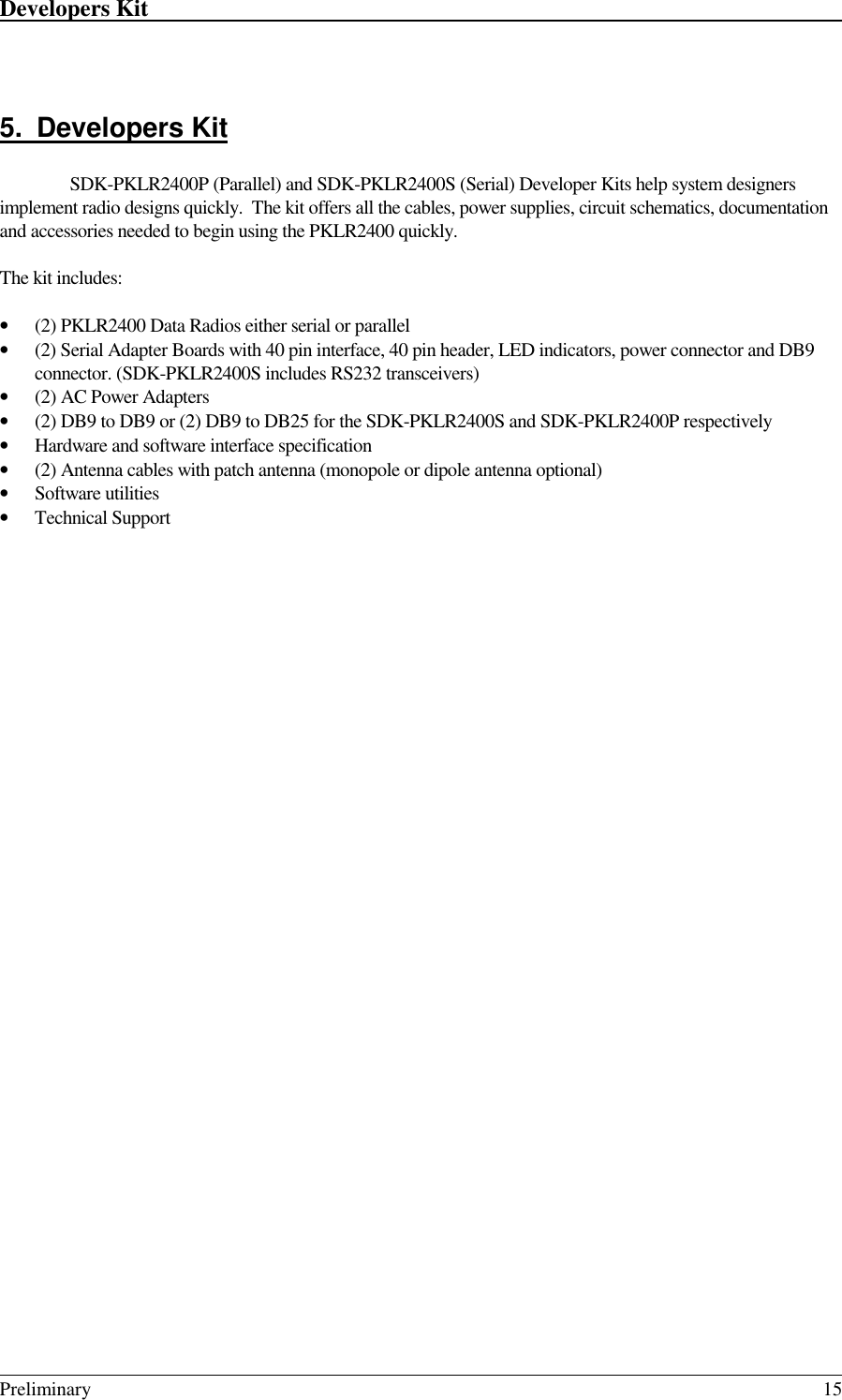
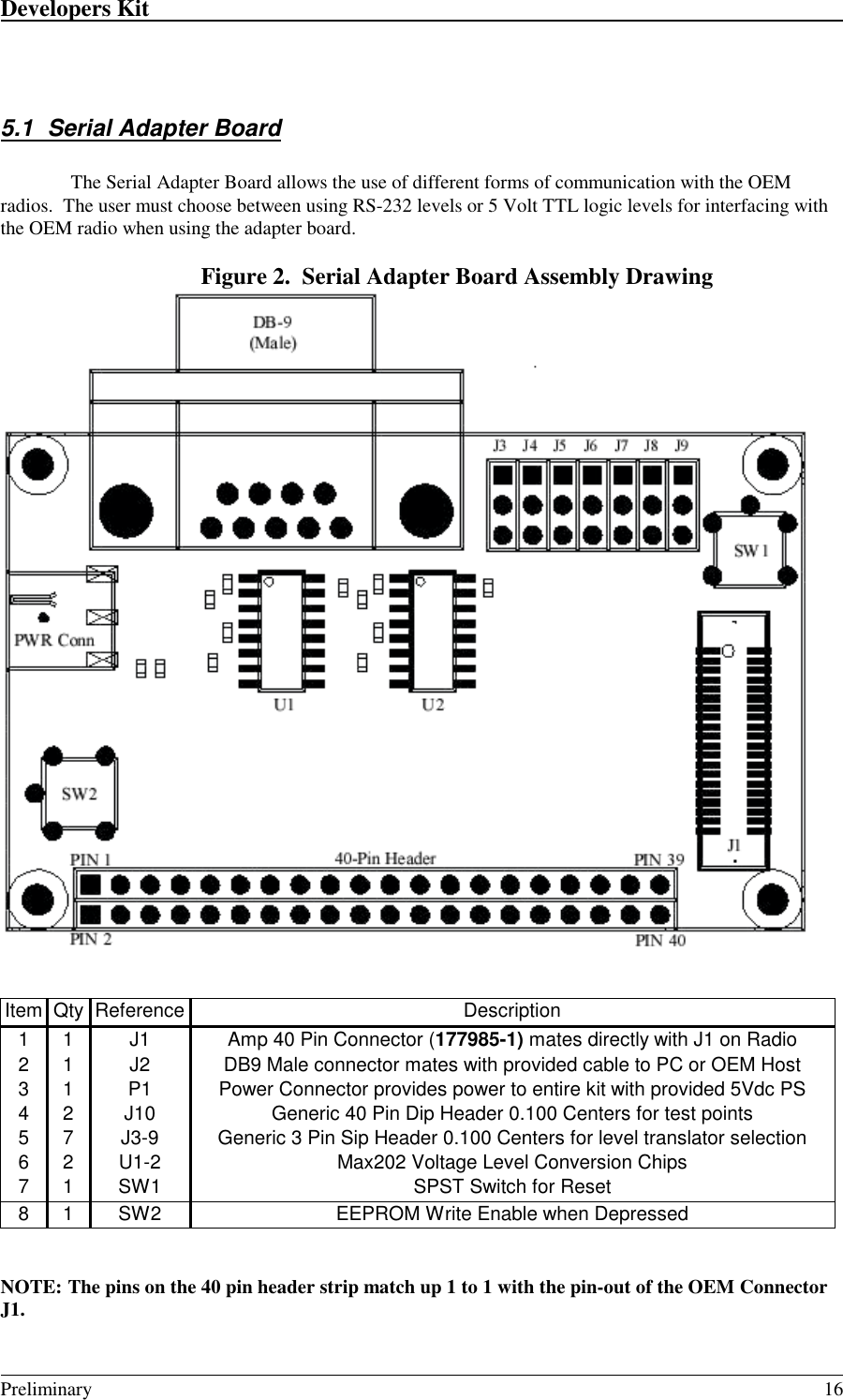
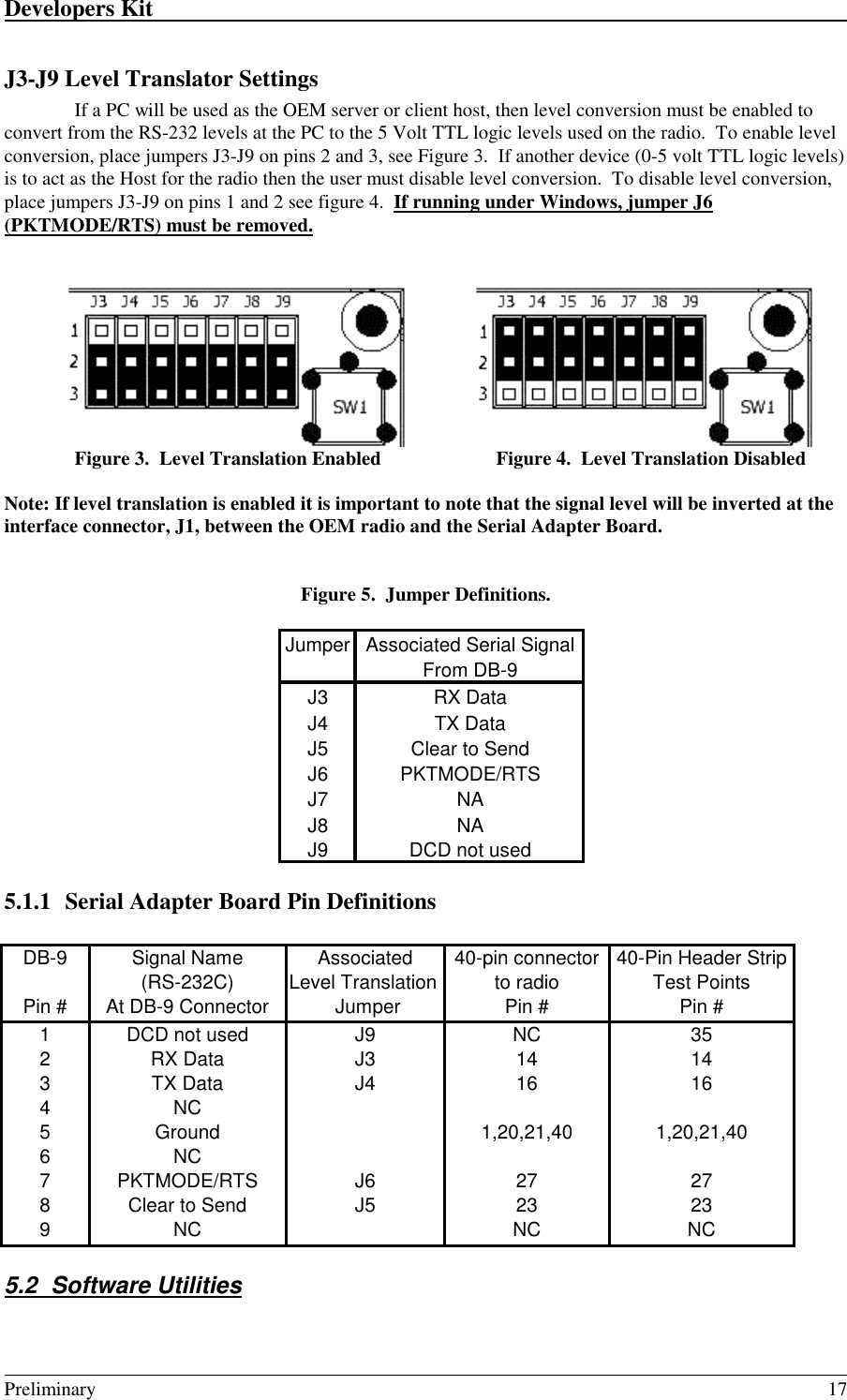

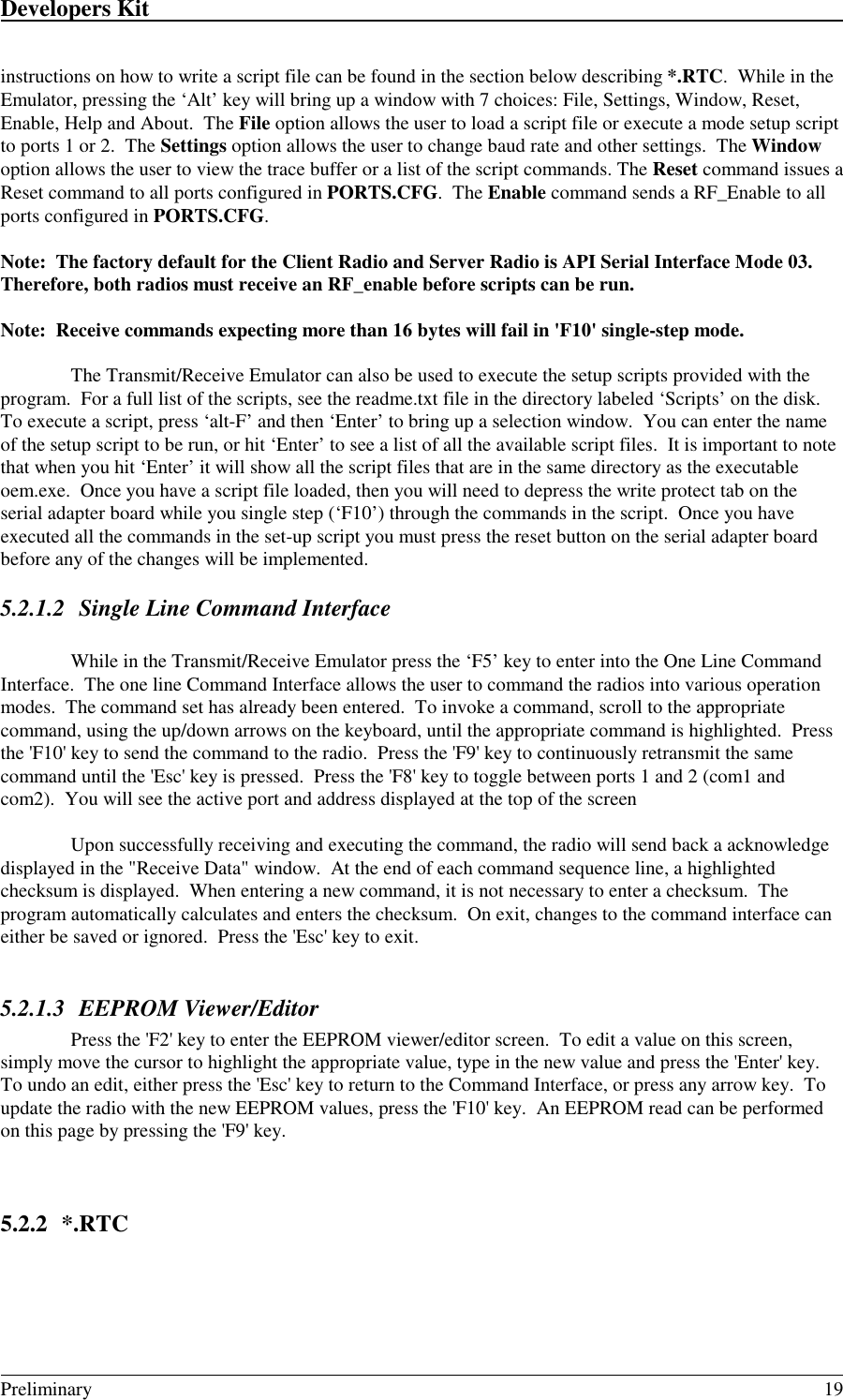
![Developers Kit Preliminary 20*.RTC files contain all of the configuration information for OEM.EXE. *.RTC files can bemodified to change timeouts, ports, and commands. *.RTC files require very specific format as detailedbelow:* -- begins and ends each command sequenceT -- invoke transmit sequence over serial host/radio interface (API Mode 3)R -- invoke receive sequence over serial host/radio interface (API Mode 3)C -- invoke transmit sequence over serial host/radio interface (Transparent Modes 1,2,4)S -- invoke receive sequence over serial host/radio interface (Transparent Modes 1,2,4)D -- invoke delay Note: Any line beginning with a "space" character is interpreted as a comment Note: The first line in PING.RTC is always interpreted as a commentExample Command Format*T[transmit port number] [timeout][transmit port number] is either "1" or "2" as designated in PORTS.CFG[timeout] is between "0000" and "9999" and is measured in milliseconds[Command] [Length Low] [Length High] [Data] [Checksum automatically provided]*5.2.3 PORTS.CFGBefore attempting to run the executables, the user must ensure the development kit radios areattached to the two ports specified in PORTS.CFG. The default configuration for PORTS.CFG assumesthat both developer kit radios are connected to the same computer.The default baud rate in PORTS.CFG is 57600. This should not be changed unless theEEPROM has been corrupted. In the event of corrupted EEPROM, hit “AltS” in the OEM.EXE programto change the baud rate to 9600 and pin 26 on the interface connector, J1, of the radio must be logic lowlevel to communicate.Note: If the EEPROM parameters for baud rate are changed, and the radio is reset, these utilitieswill not communicate with the radio until pin 26 is held at logic low level and the third line ofPORTS.CFG is changed to 9600.5.2.4 Setup ScriptsAeroComm provides several scripts to allow easy setup and configuration for different modes. These setupscripts are as follows:S1AC.RTC – Setup client radio to Mode 1 AddressedS1AS.RTC – Setup server radio to Mode 1 AddressedS1NC.RTC– Setup client radio to Mode 1 Non-AddressedS1NS.RTC– Setup server radio to Mode 1 Non-AddressedS2AC.RTC– Setup client radio to Mode 2 AddressedS2AS.RTC– Setup server radio to Mode 2 AddressedS2NC.RTC– Setup client radio to Mode 2 Non-AddressedS2NS.RTC– Setup server radio to Mode 2 Non-AddressedS4AC.RTC– Setup client radio to Mode 4 AddressedS4AS.RTC– Setup server radio to Mode 4 AddressedS4NC.RTC– Setup client radio to Mode 4 Non-Addressed](https://usermanual.wiki/Laird-Connectivity/PKLR2400.Exhibit-14-AeroComm-PKLR2400-Radio-Users-Manual/User-Guide-56977-Page-20.png)
